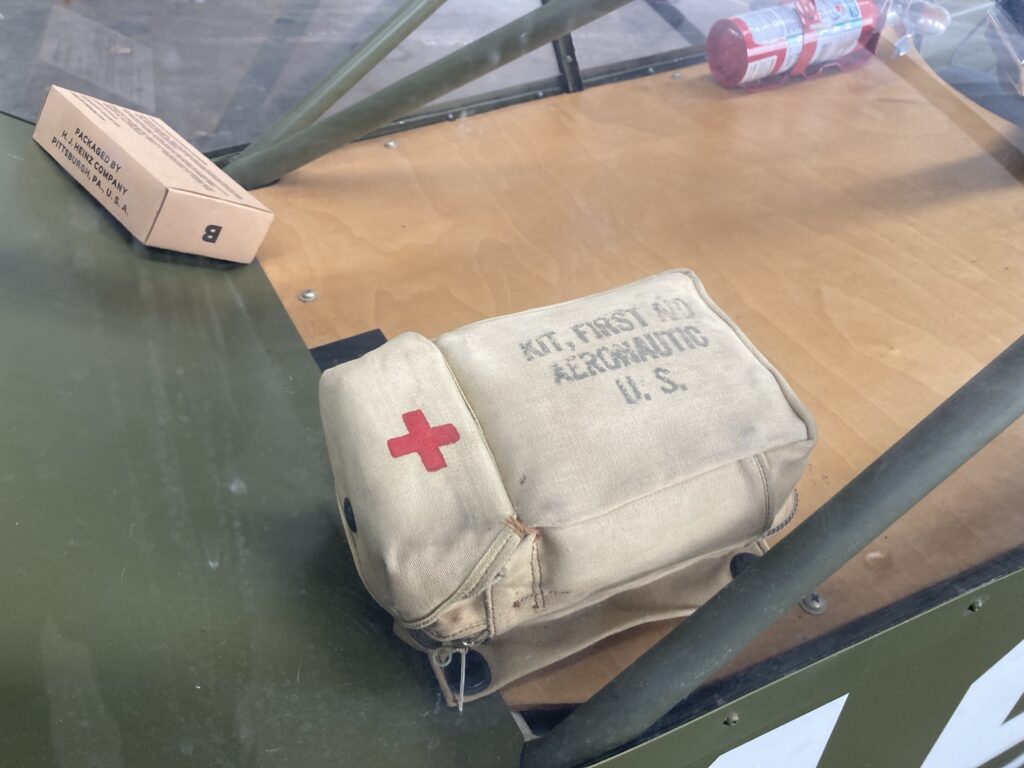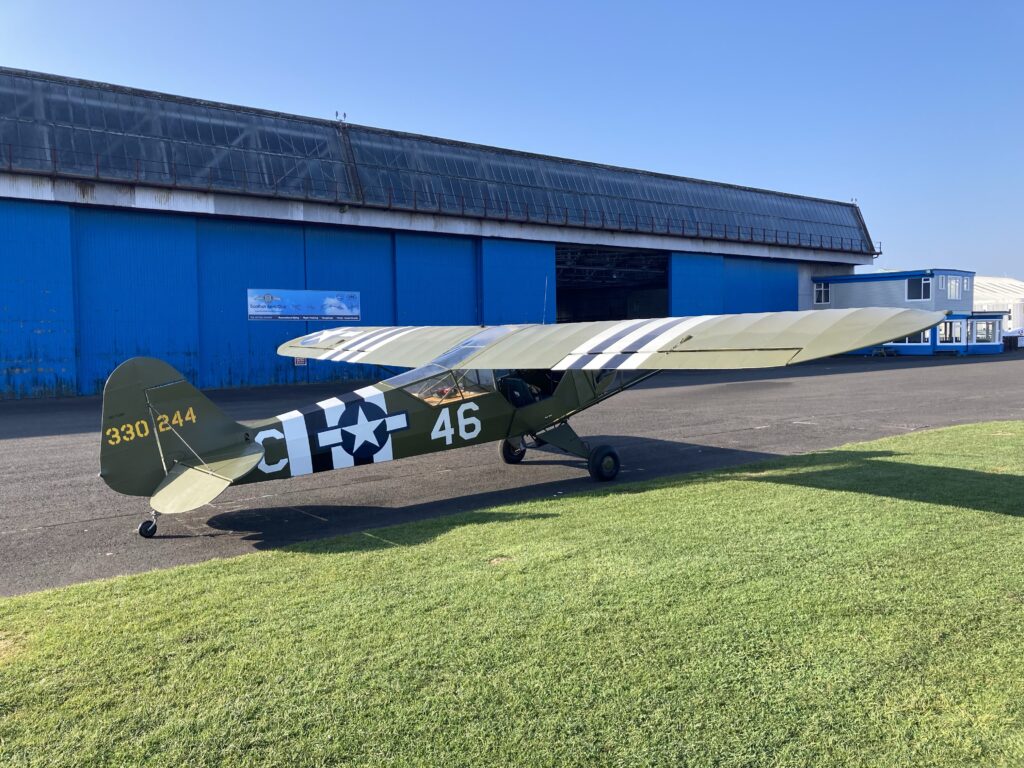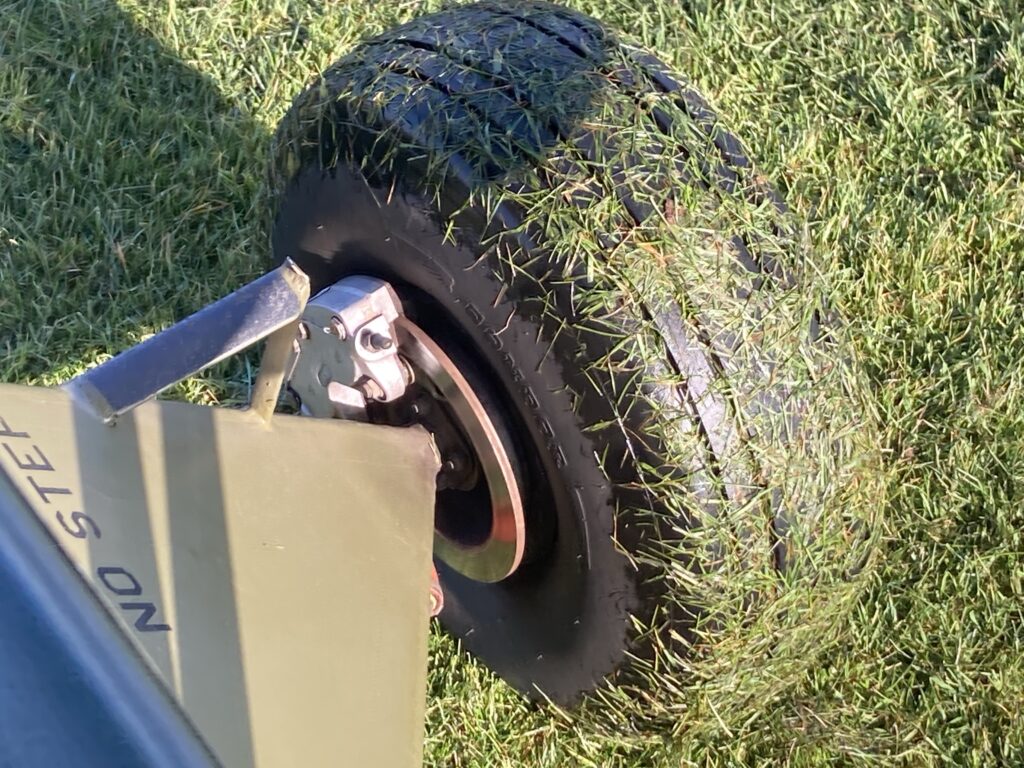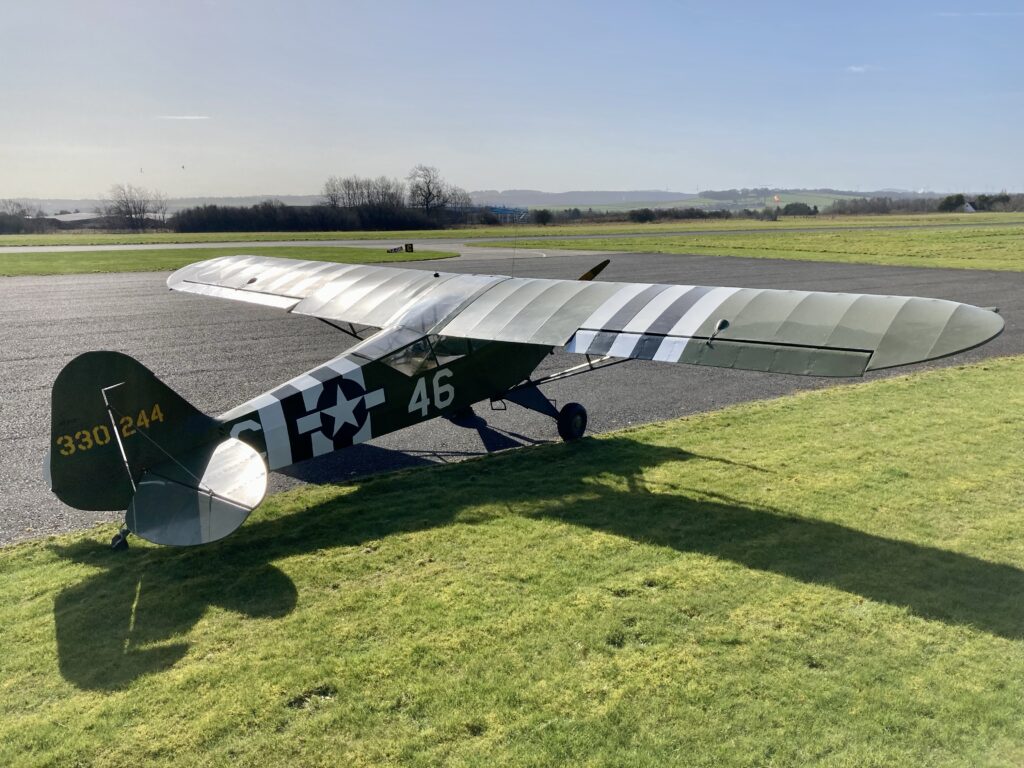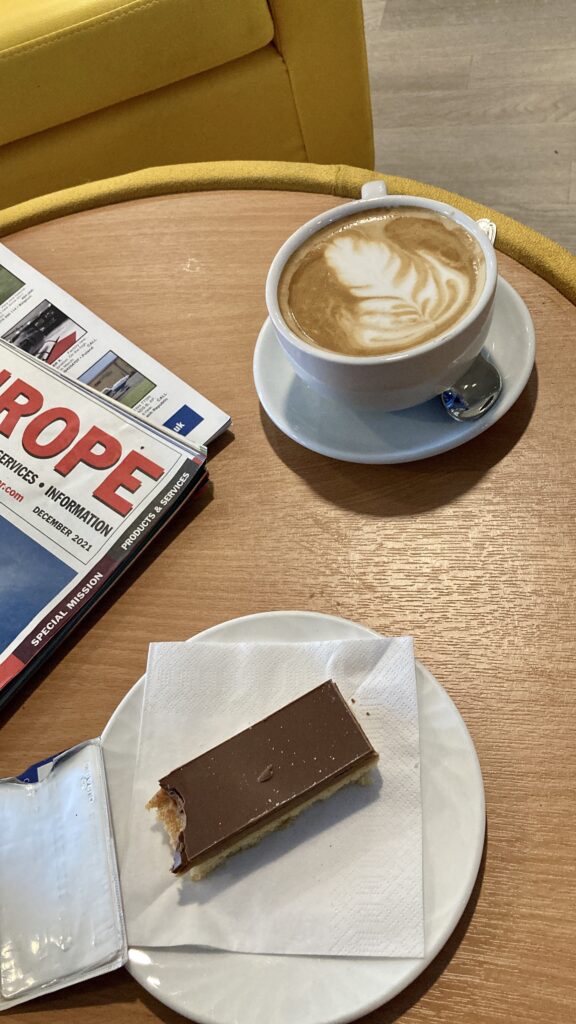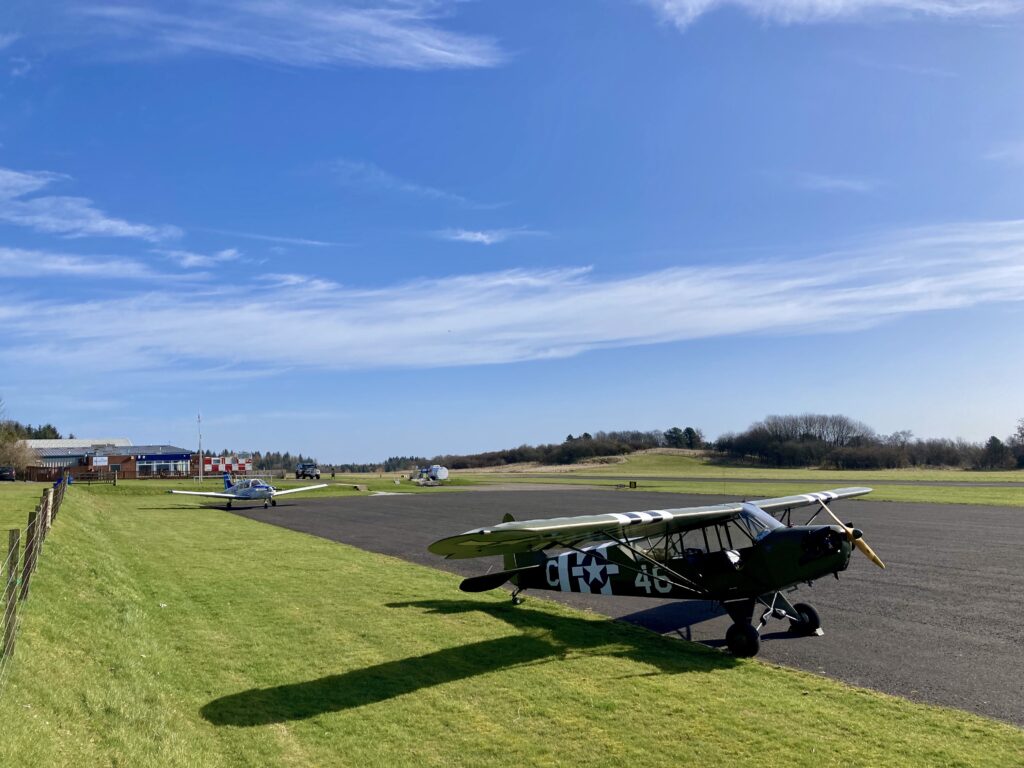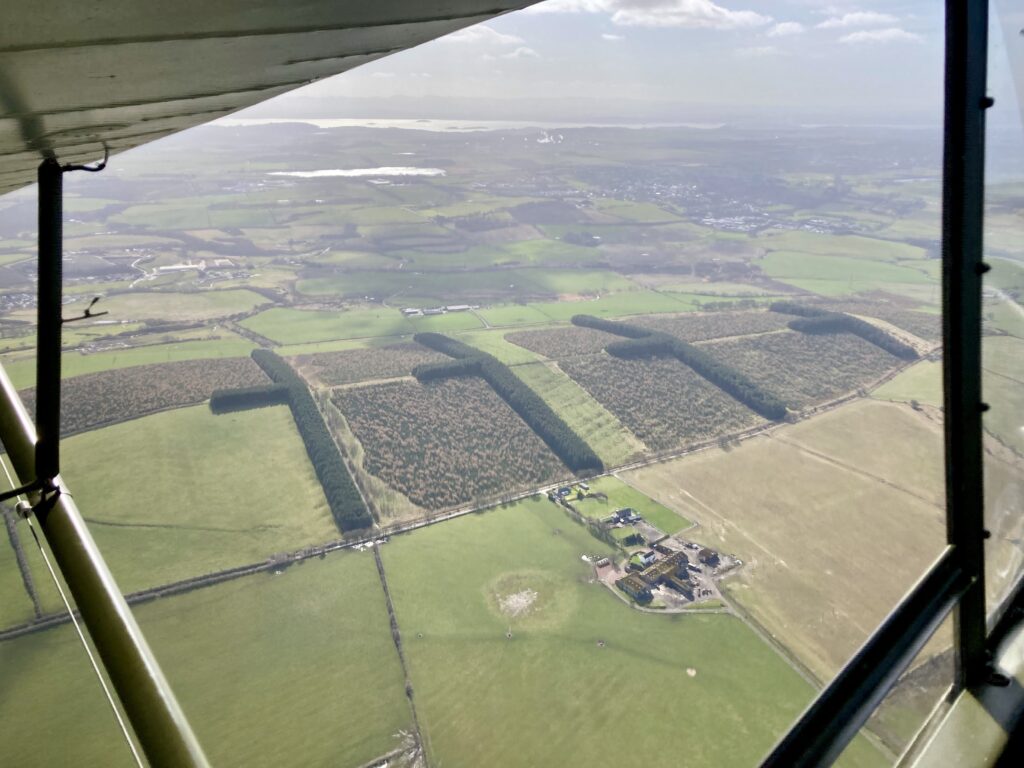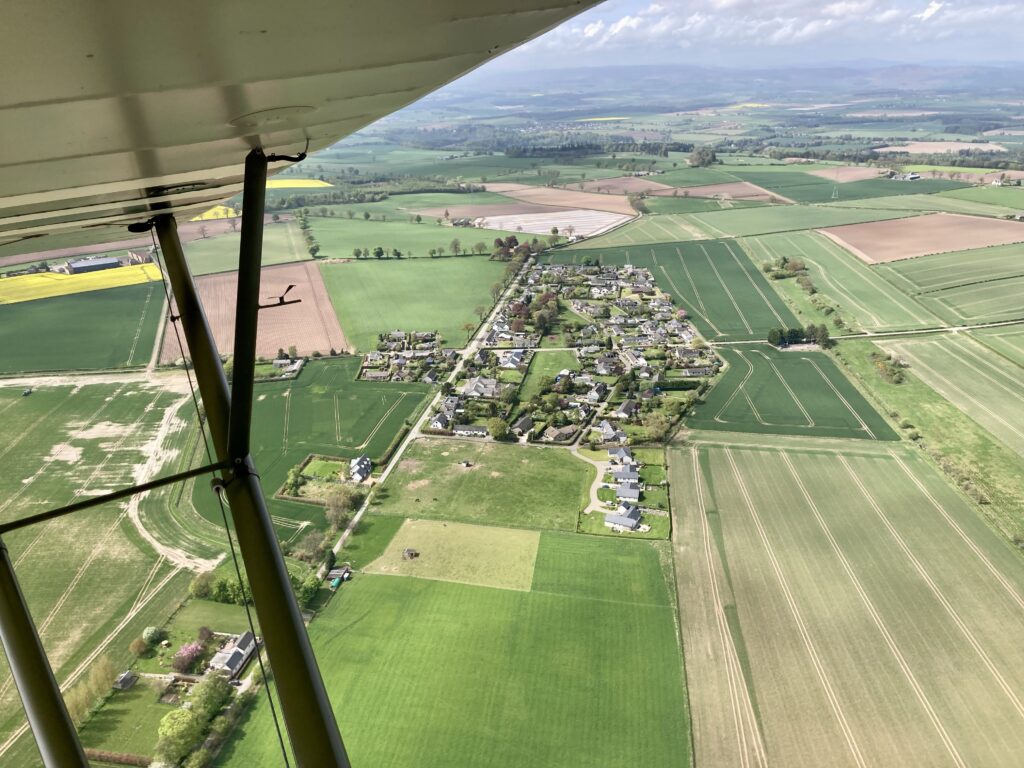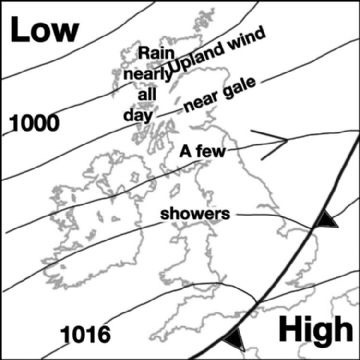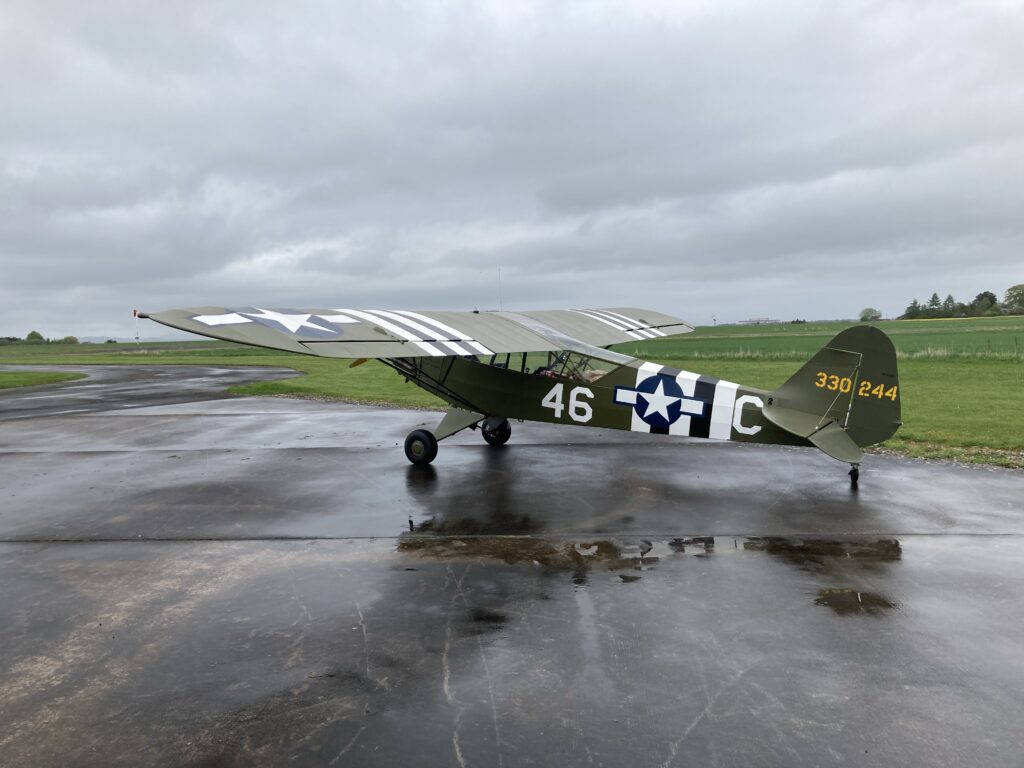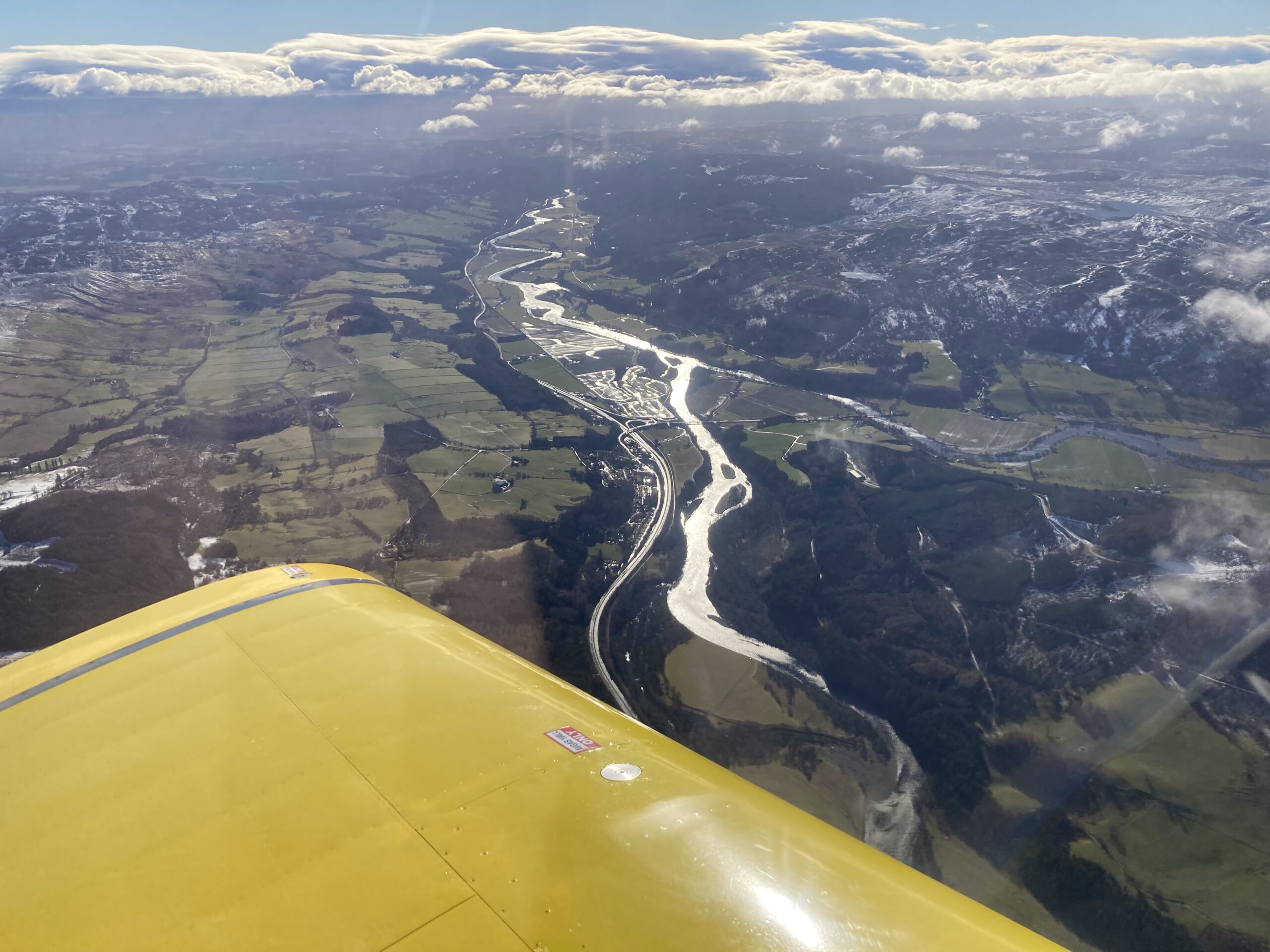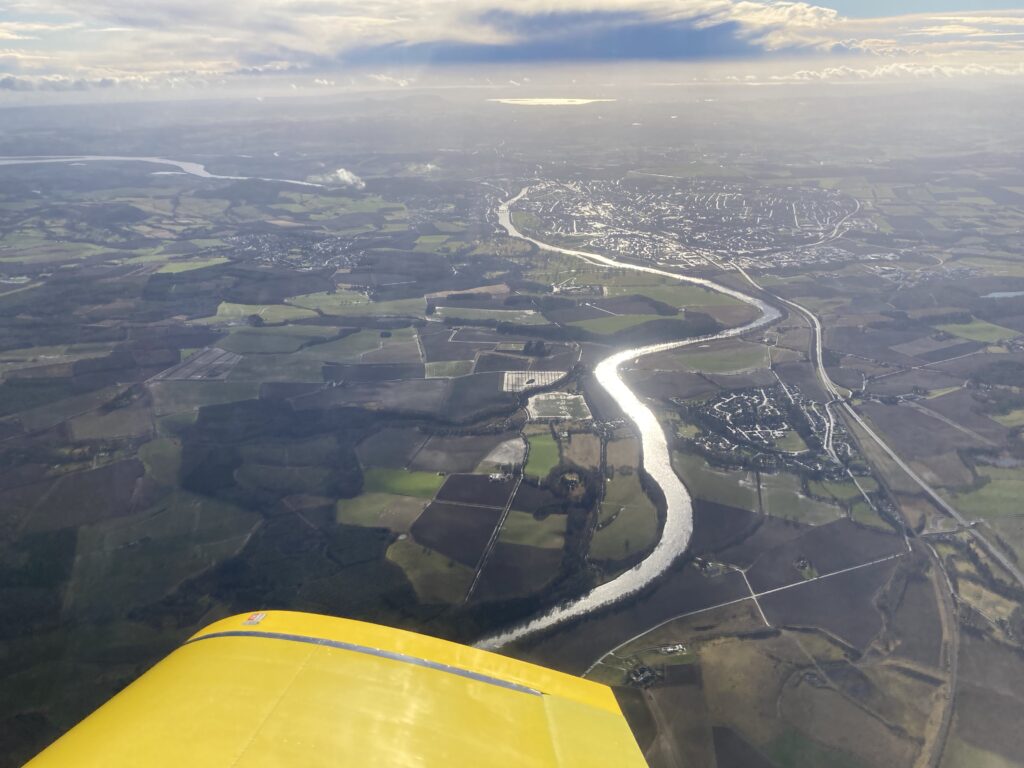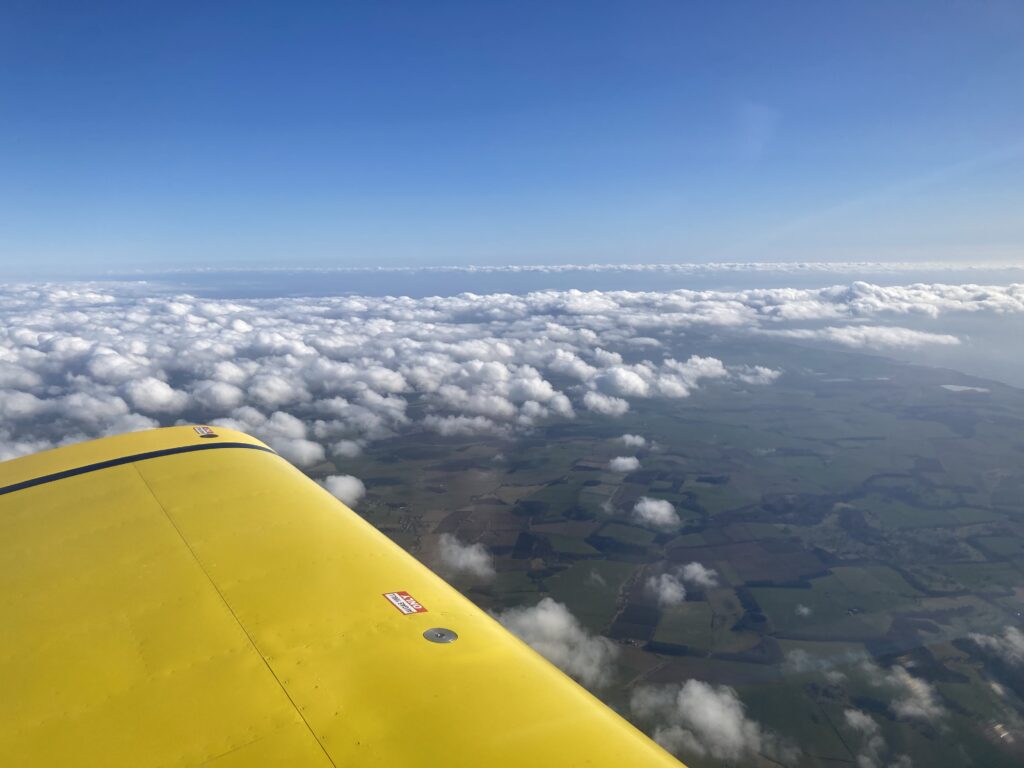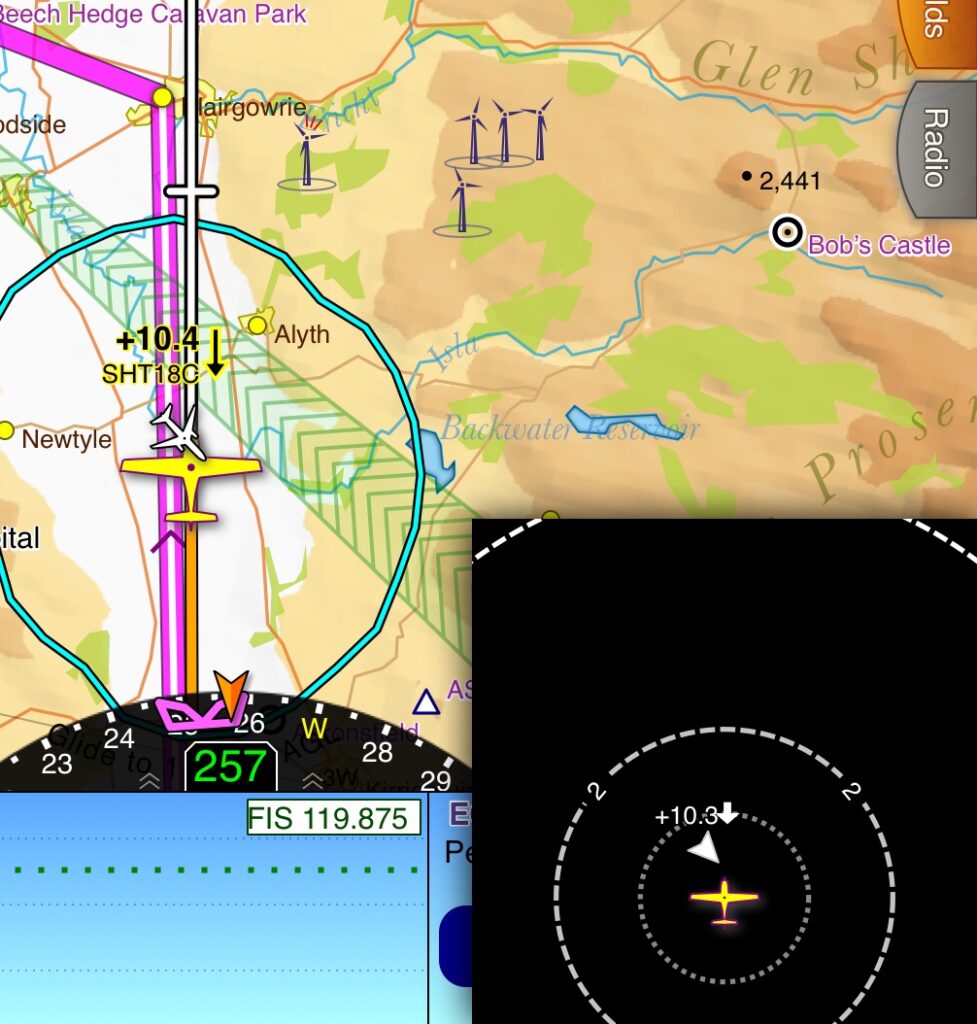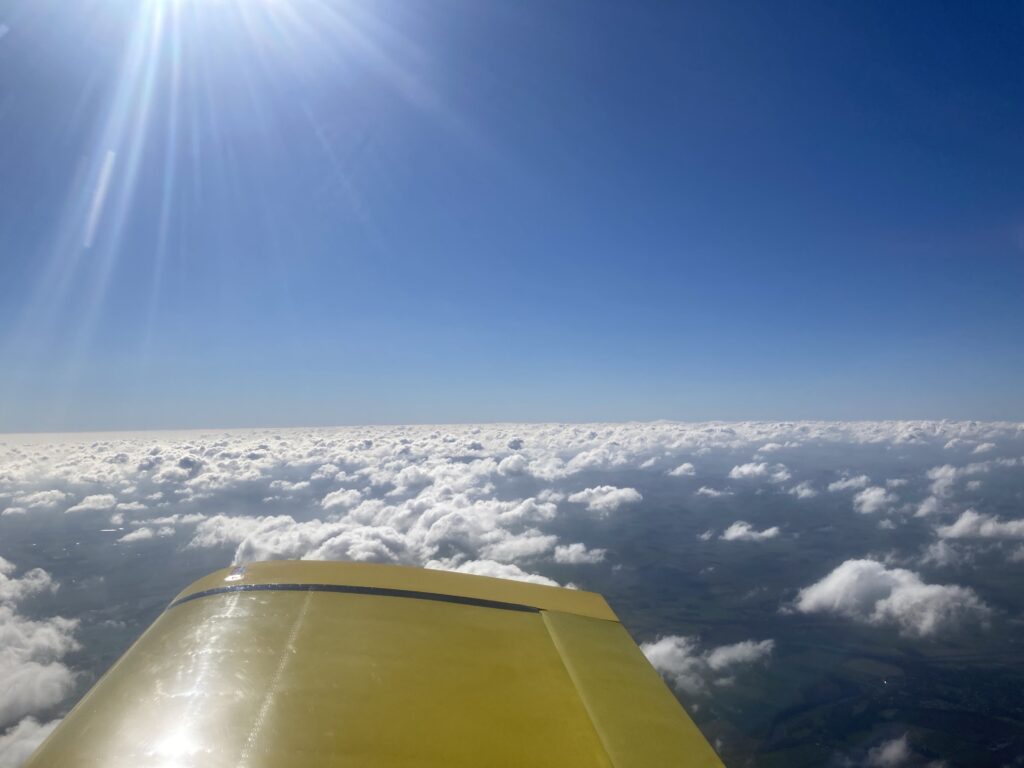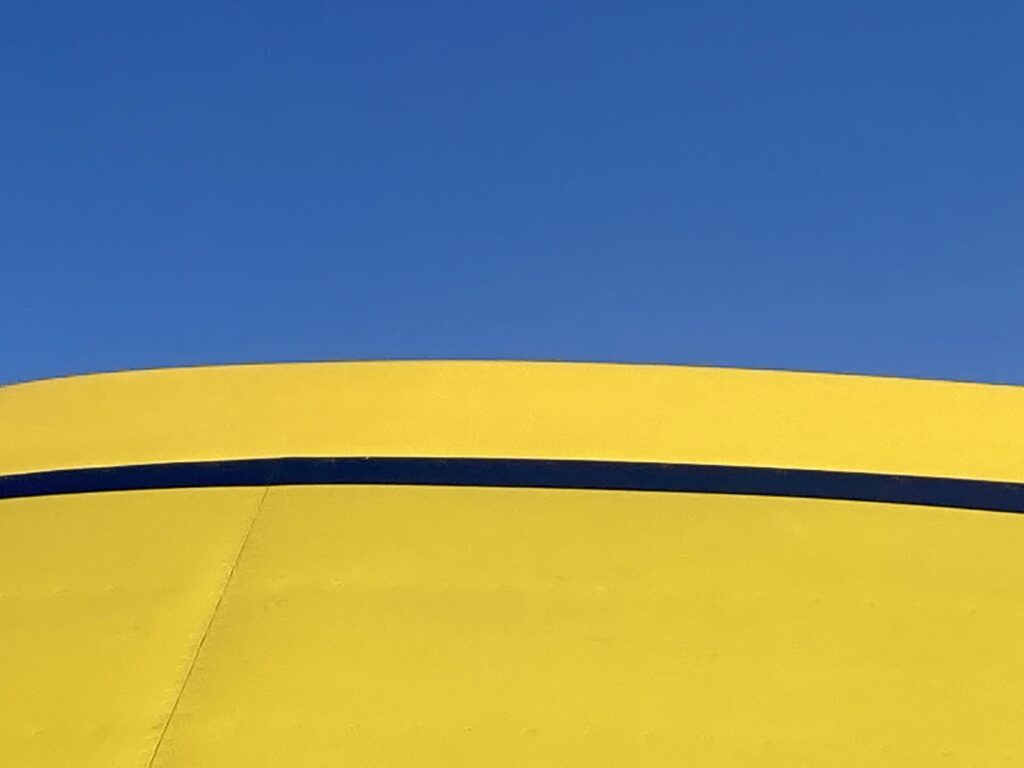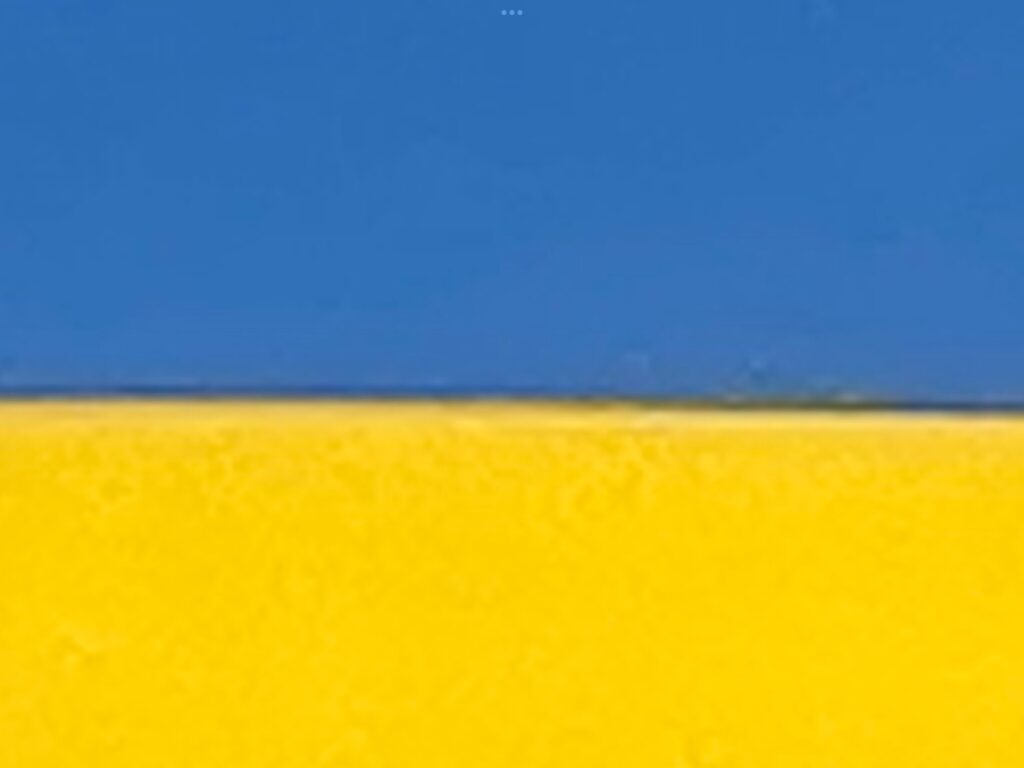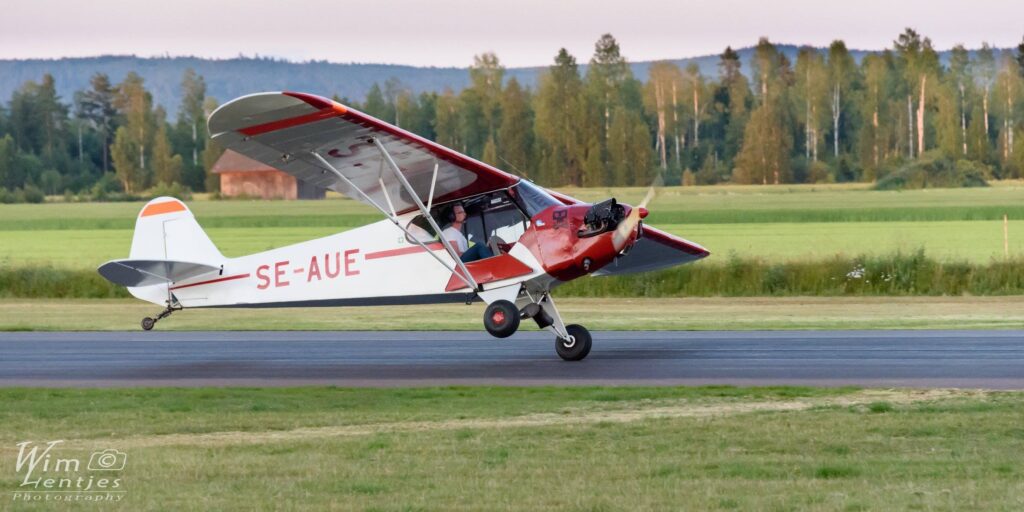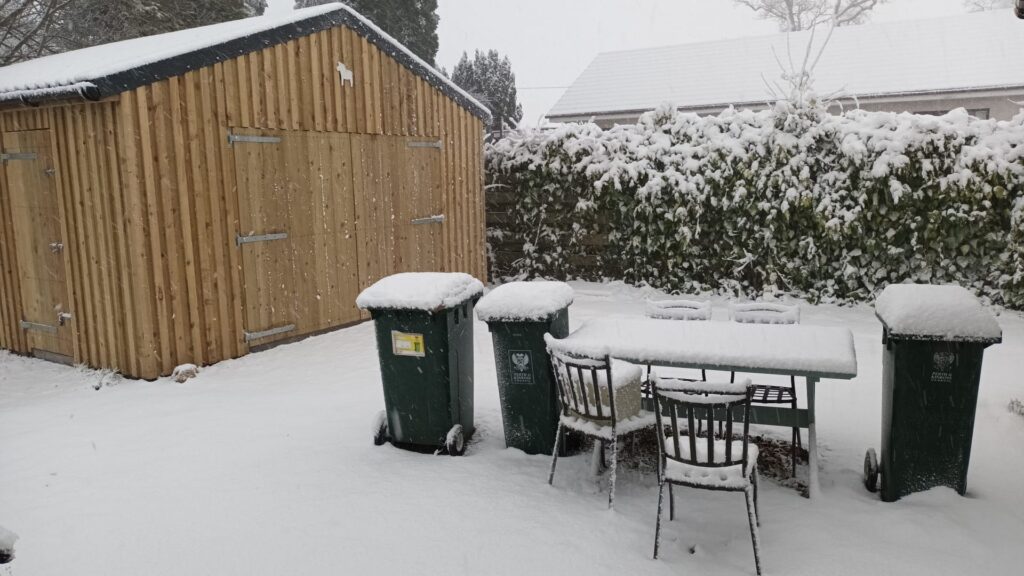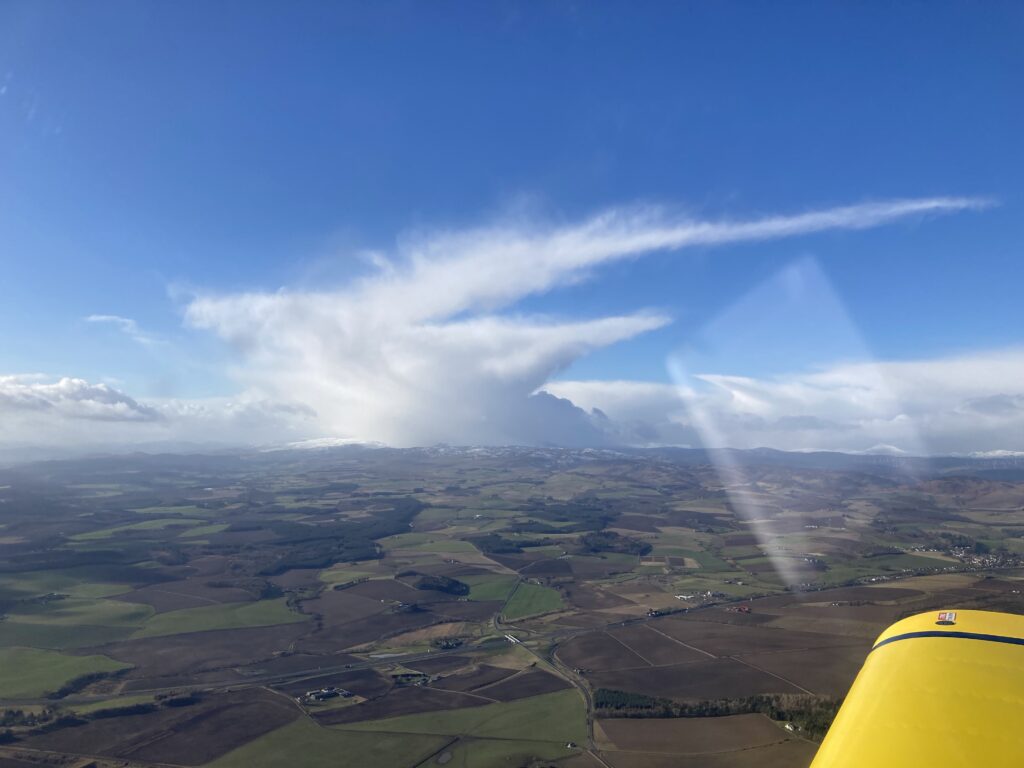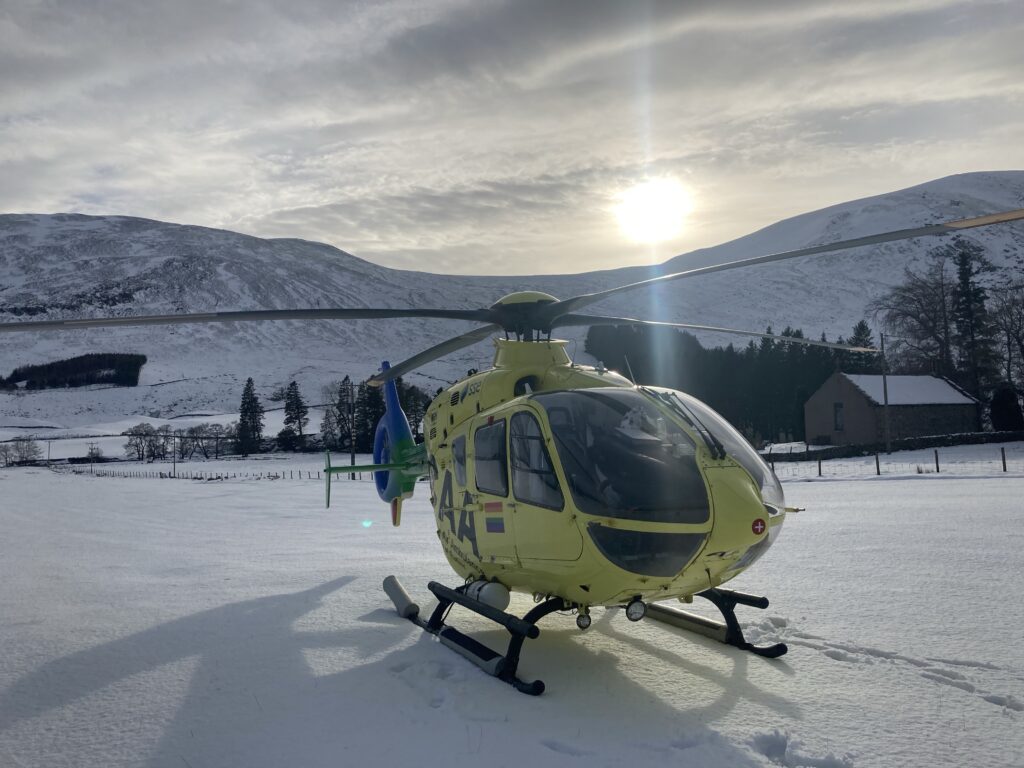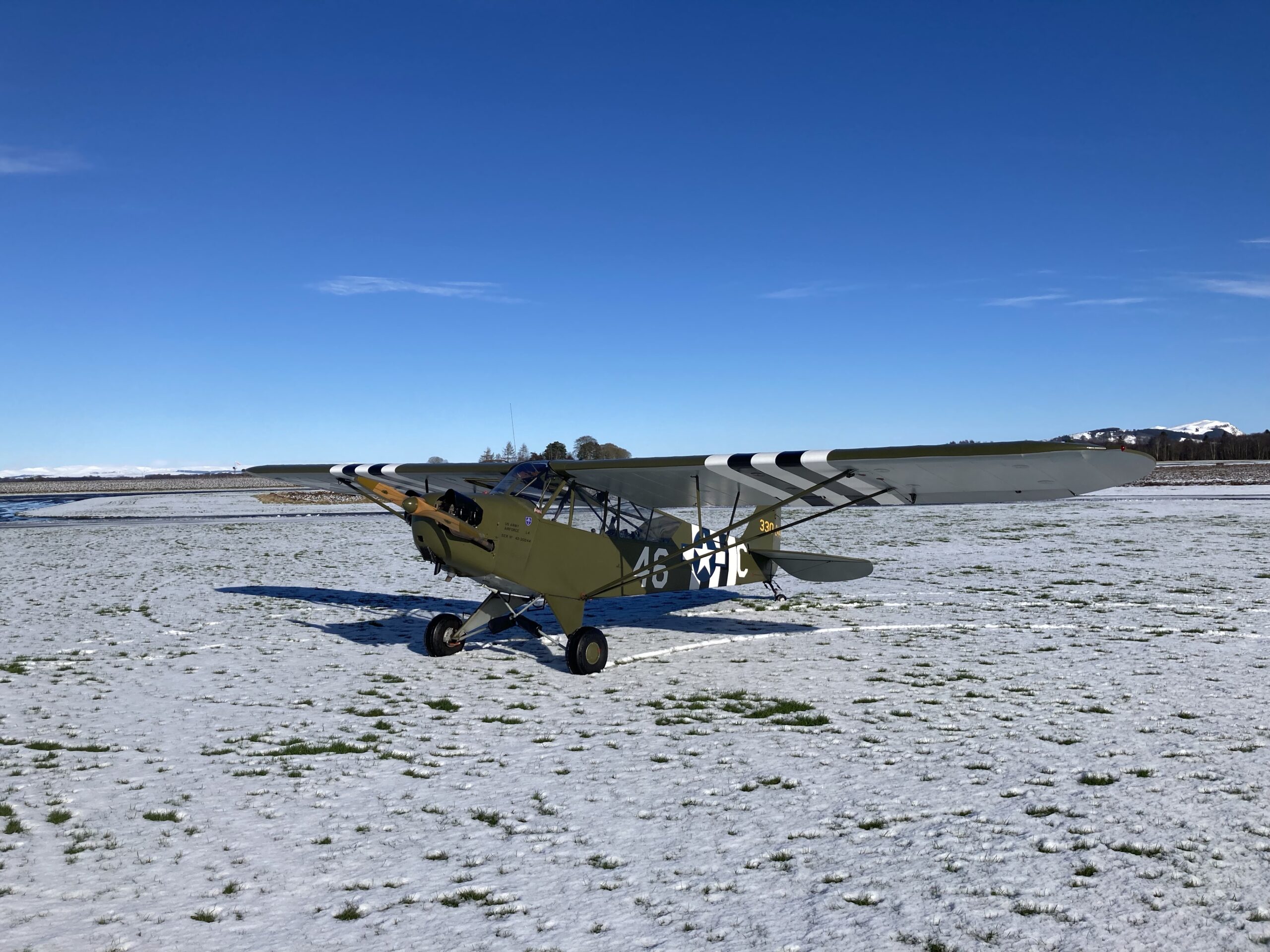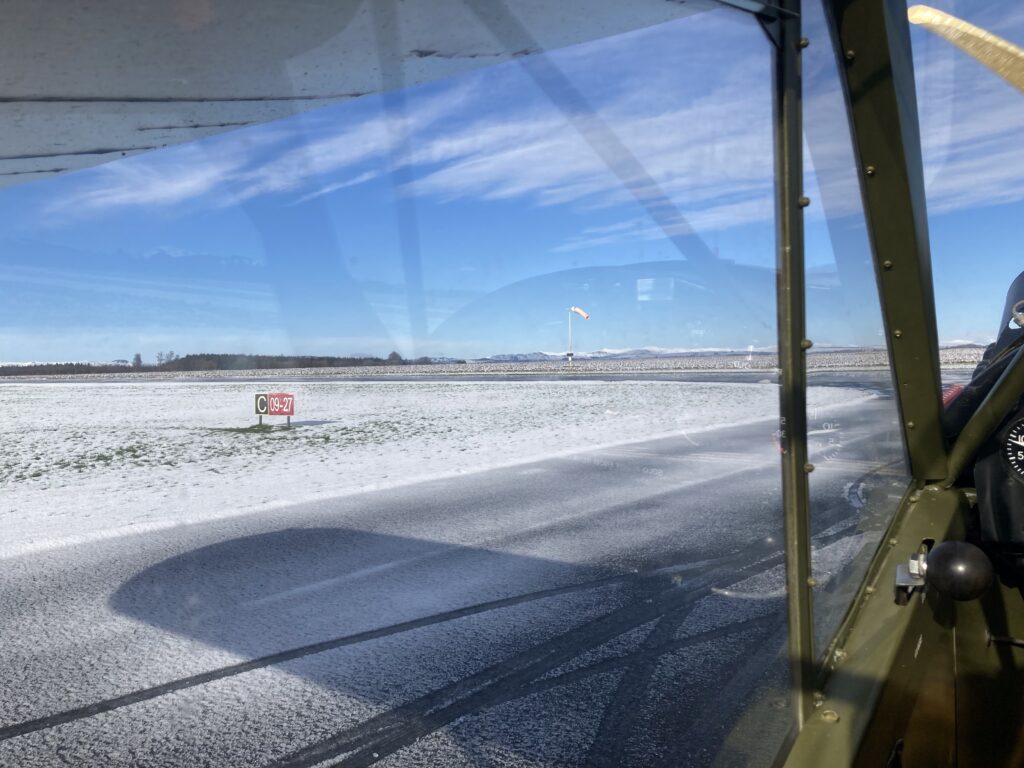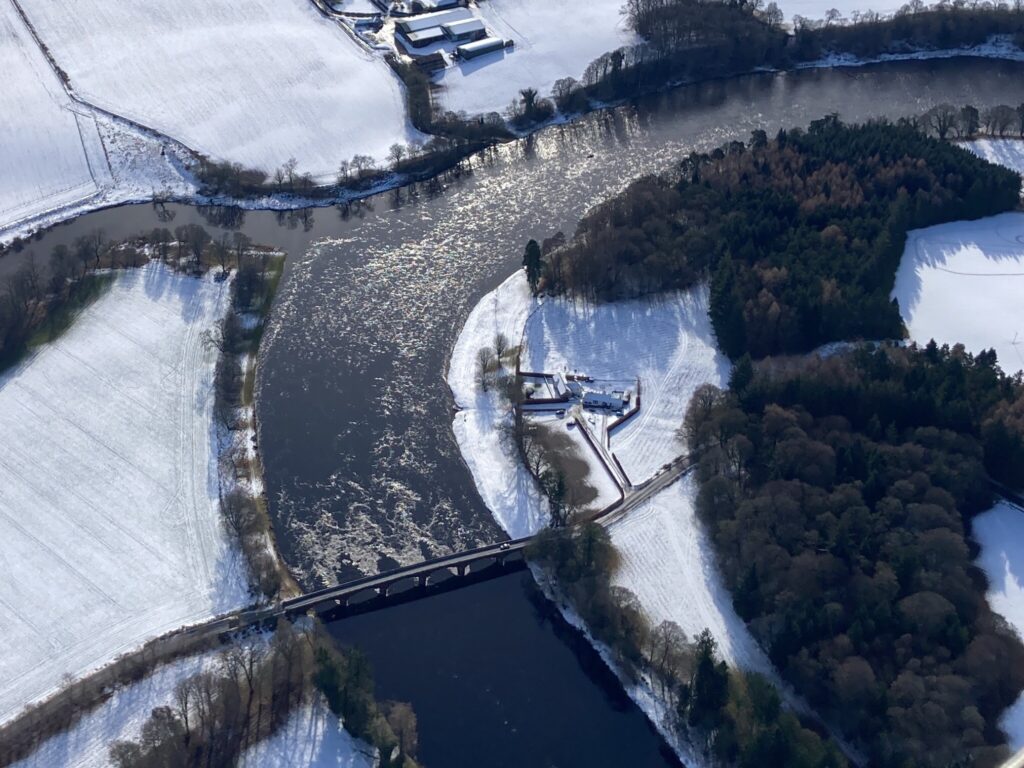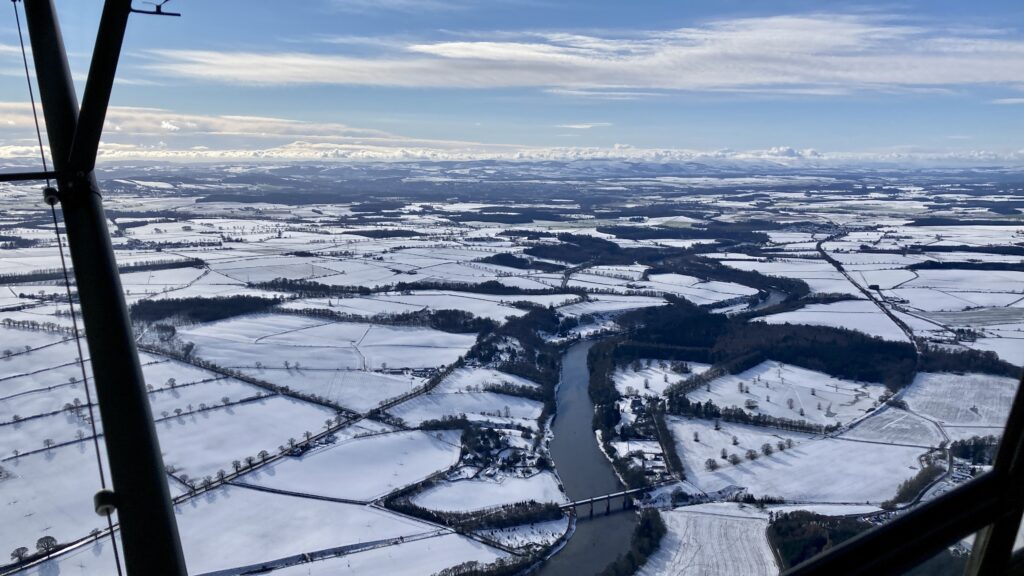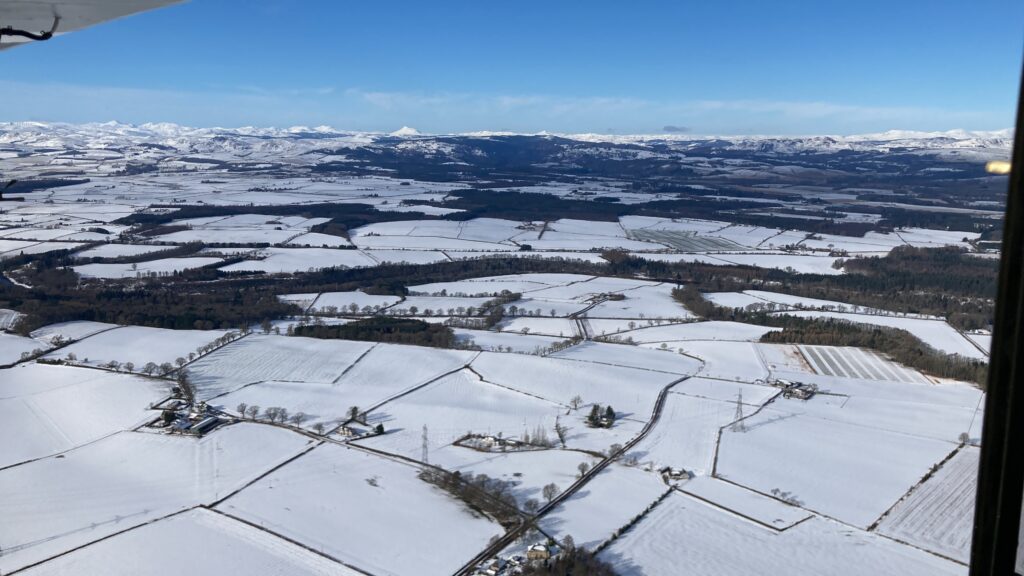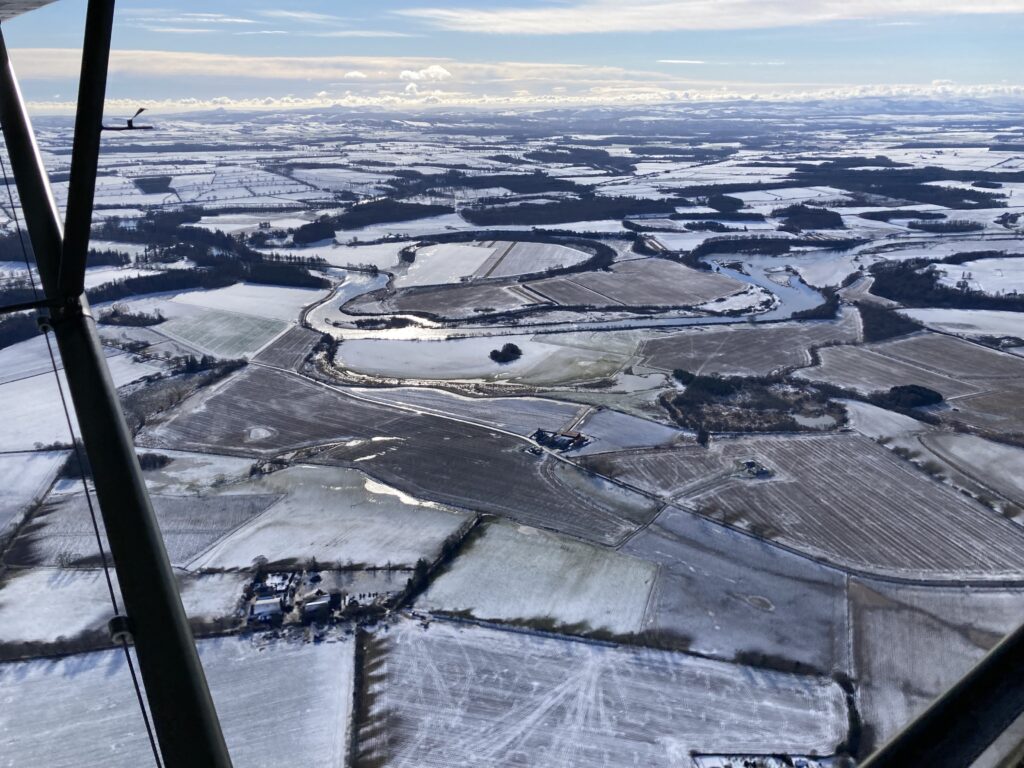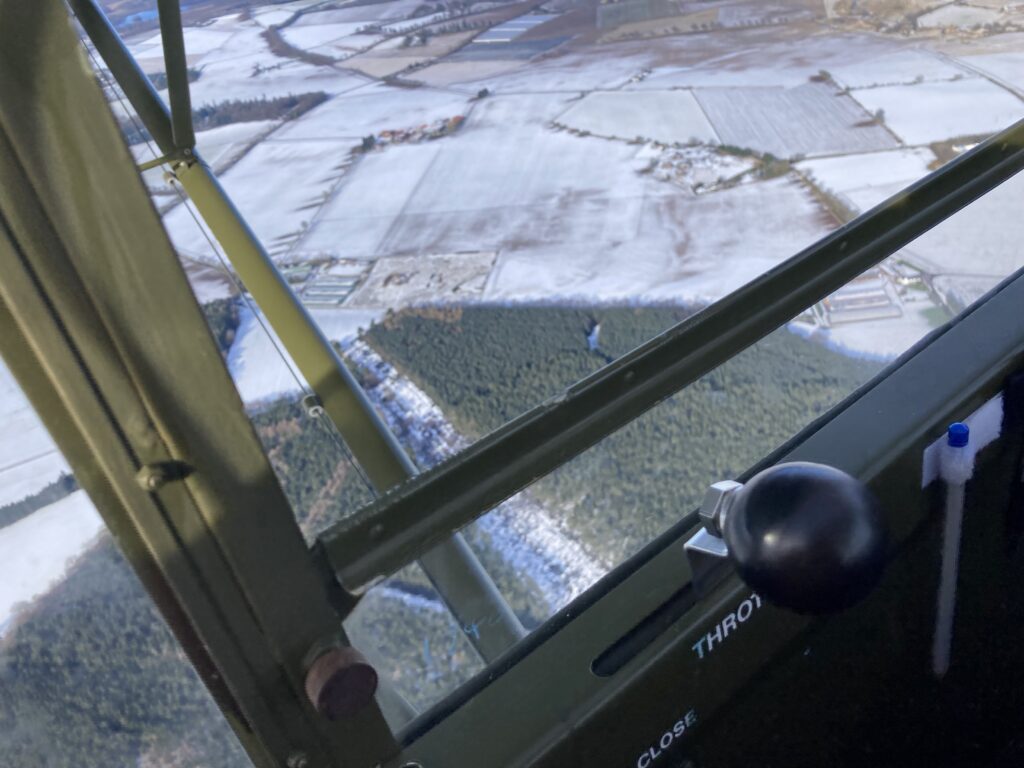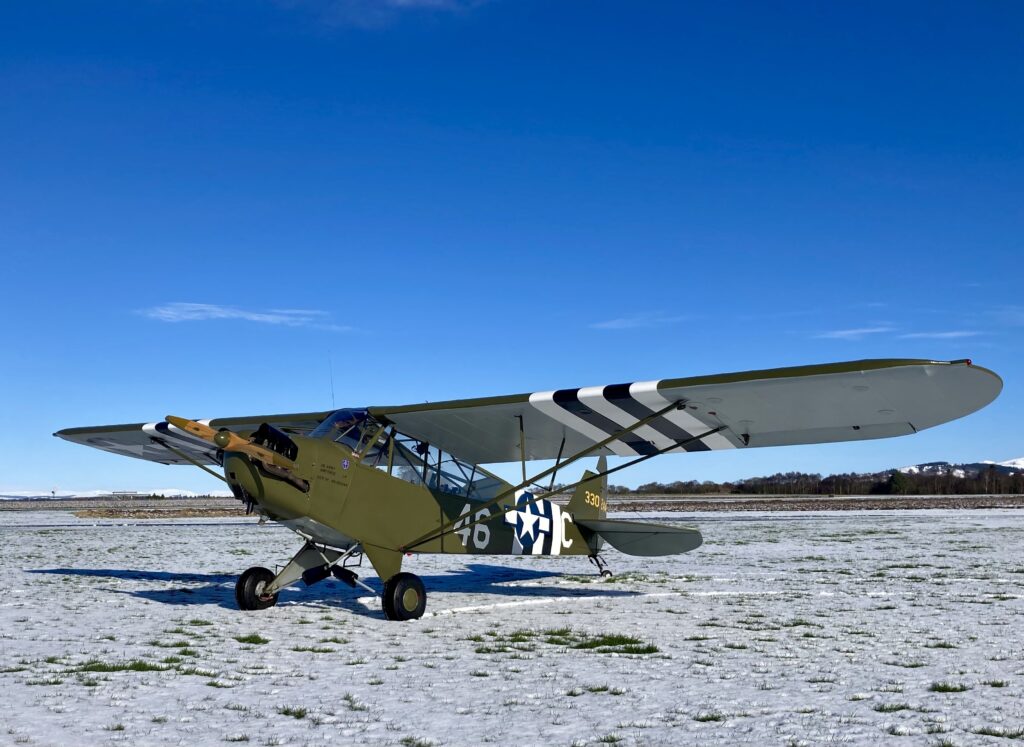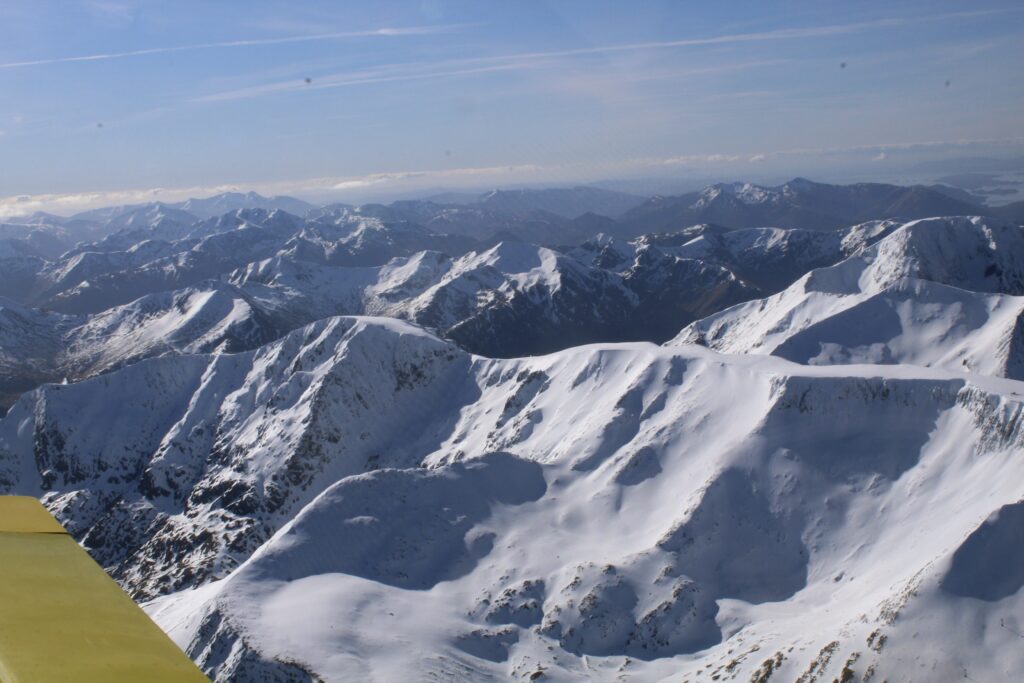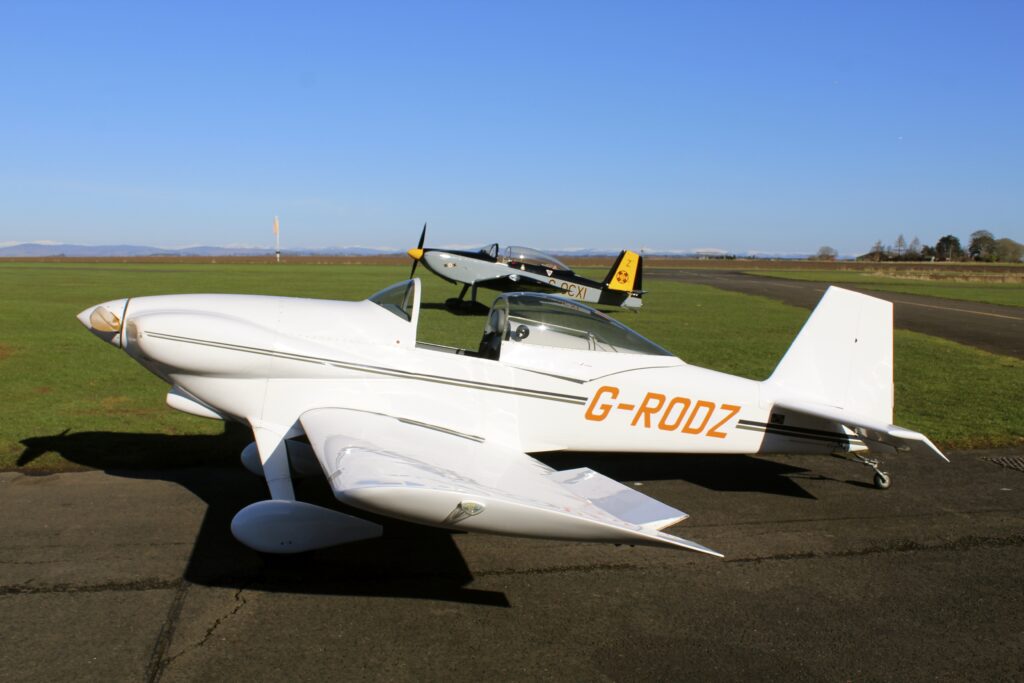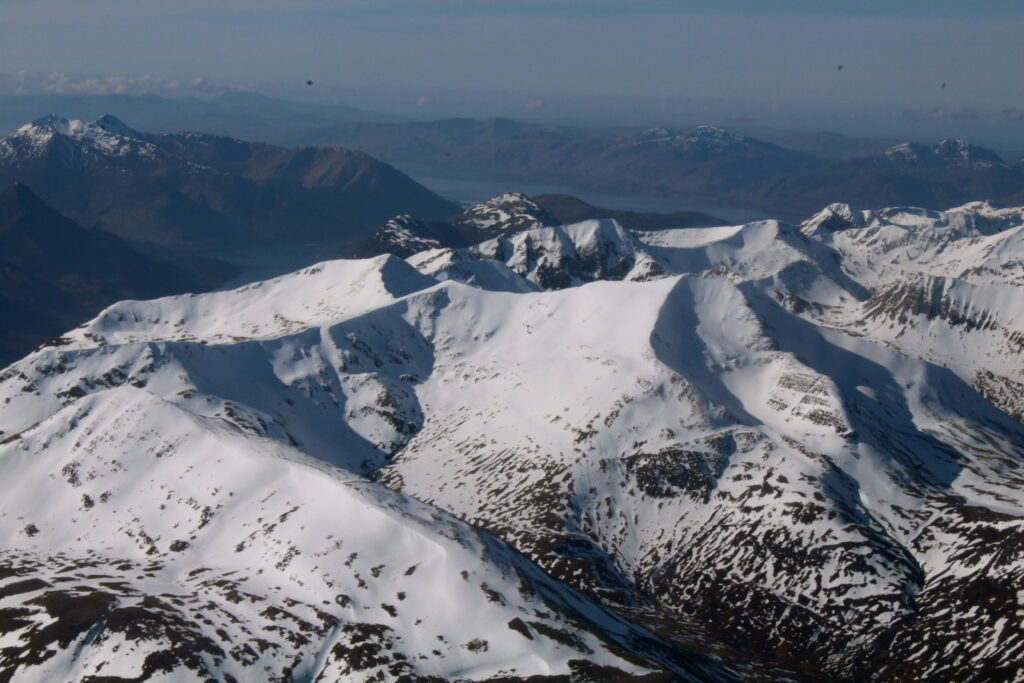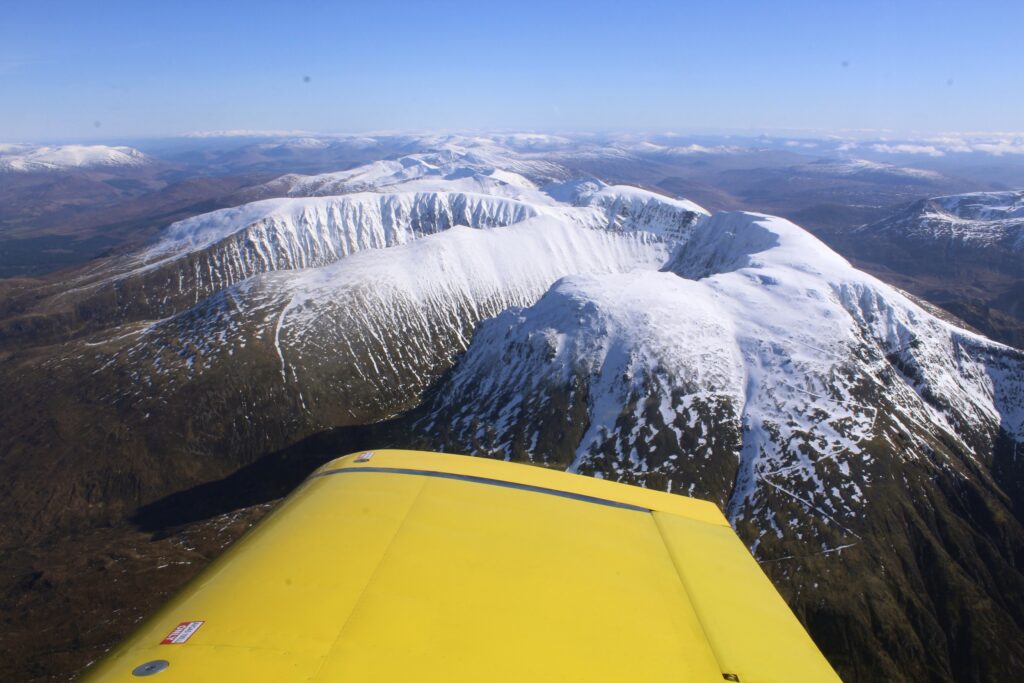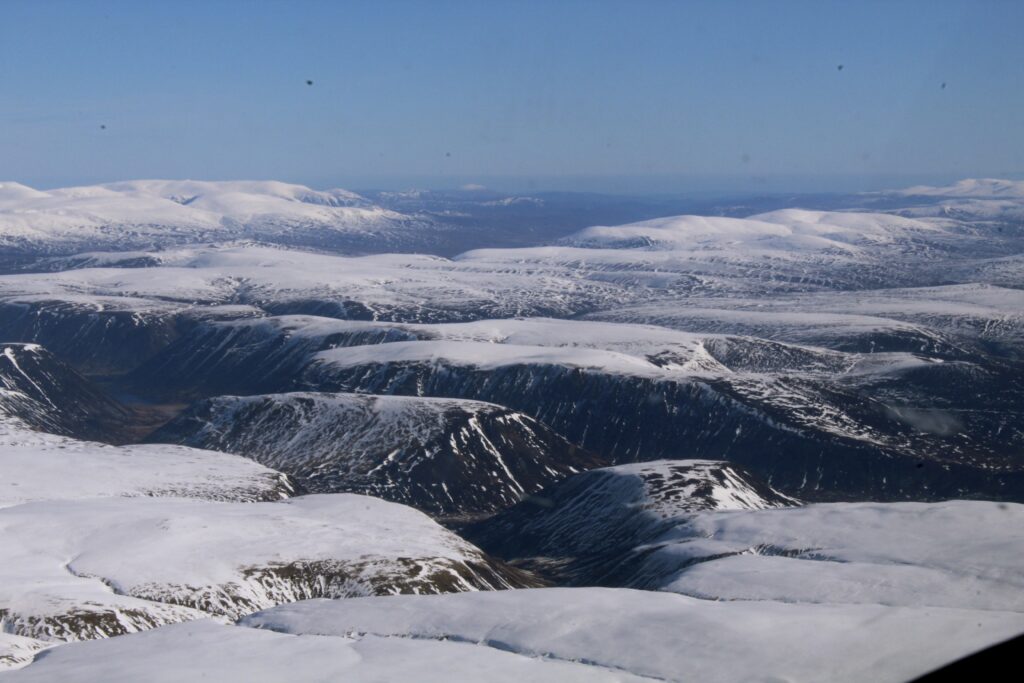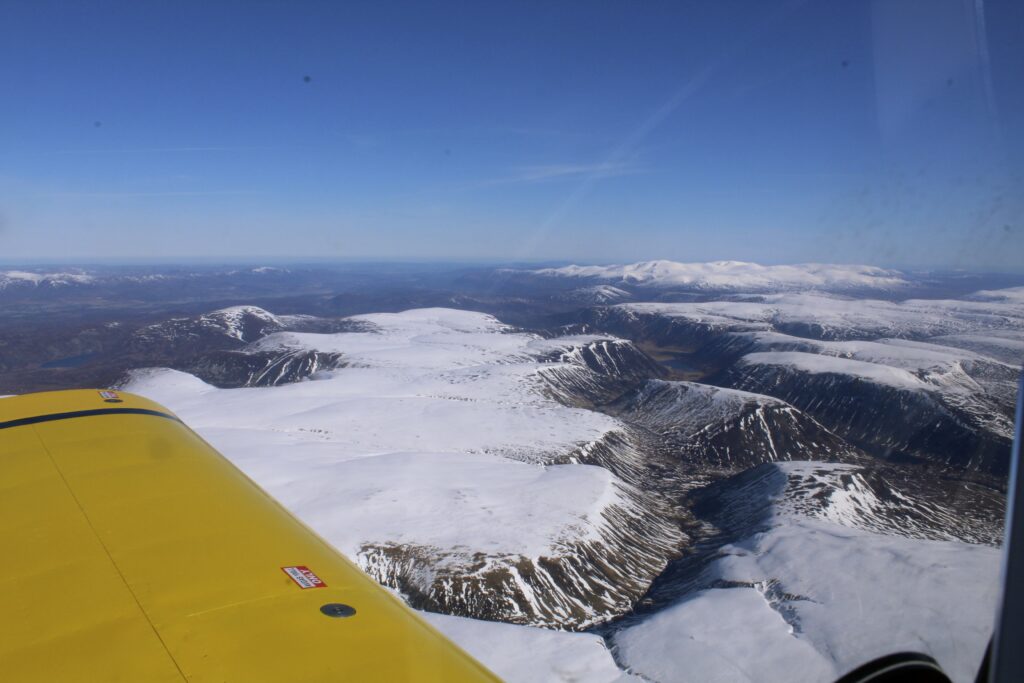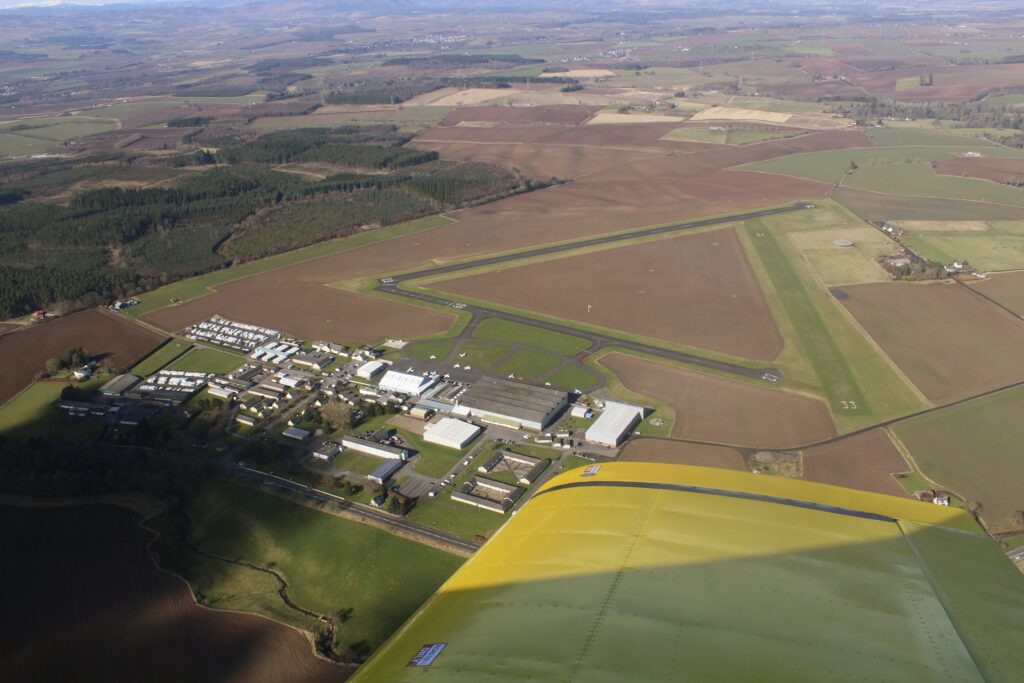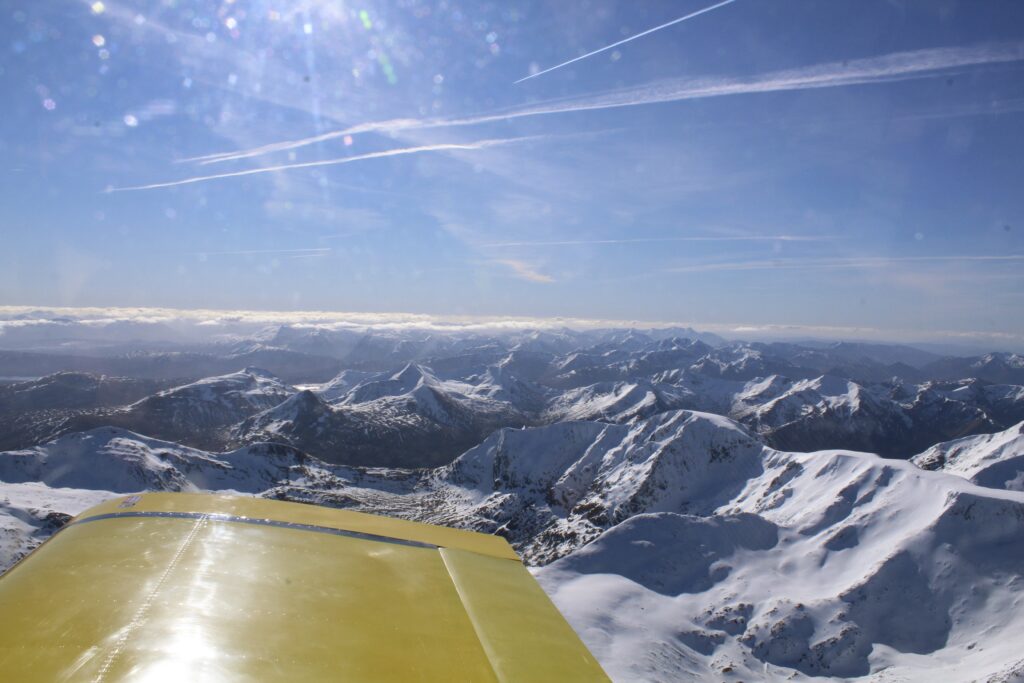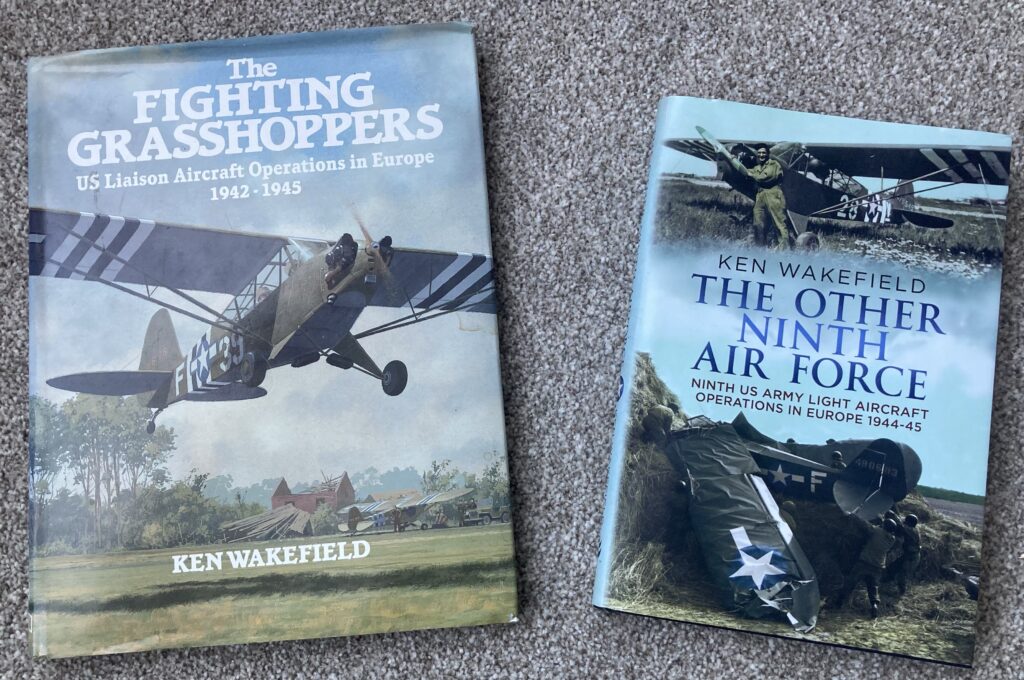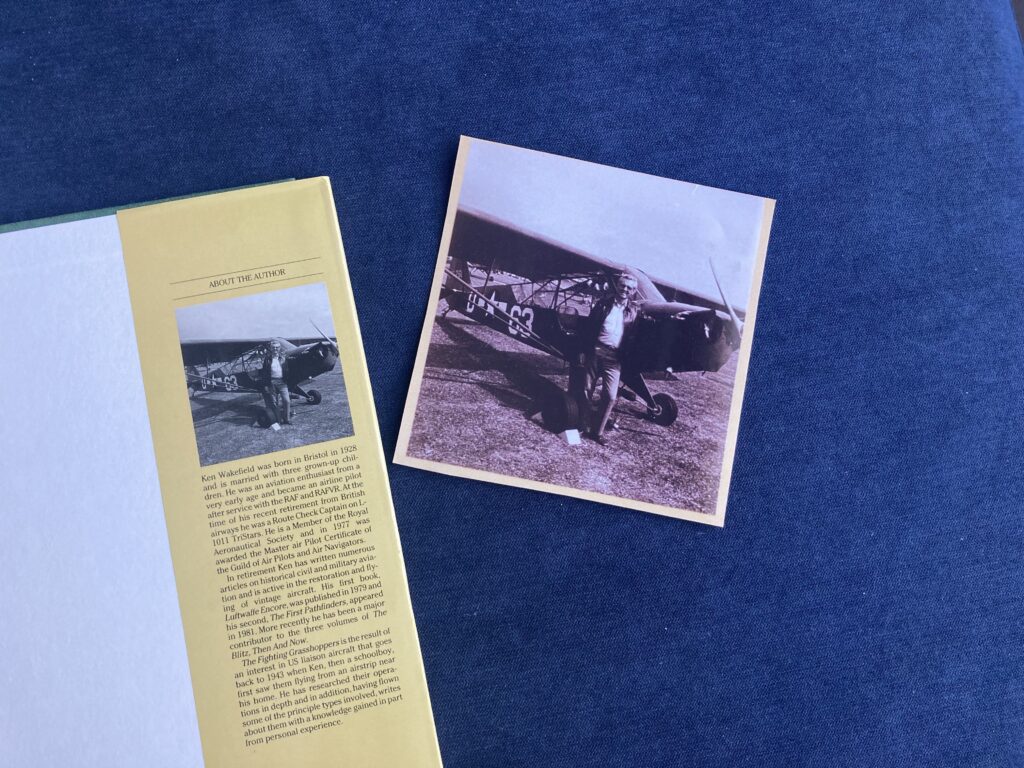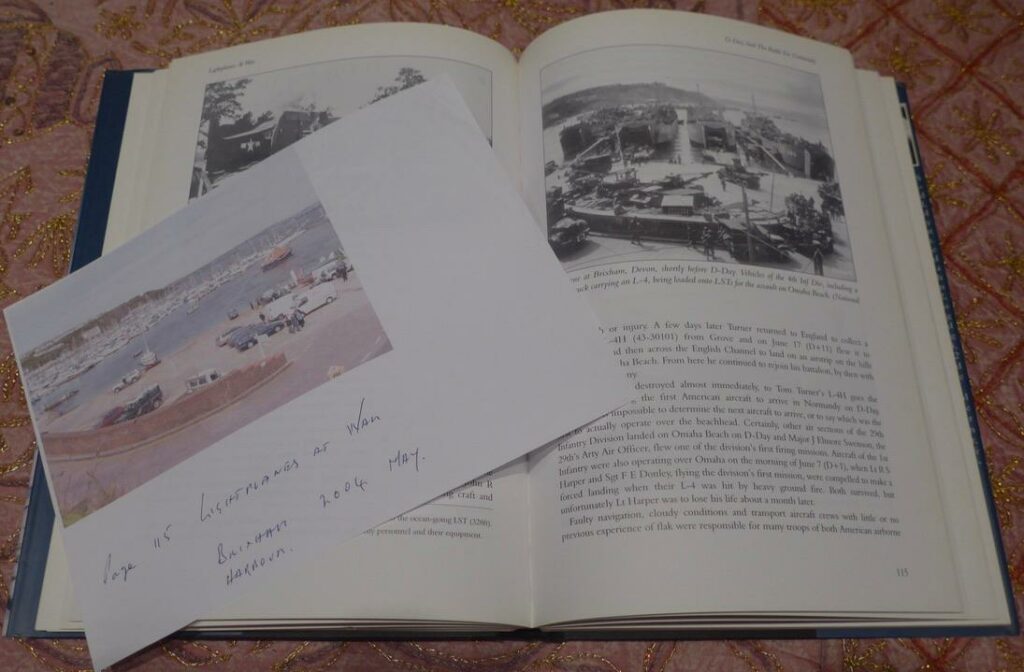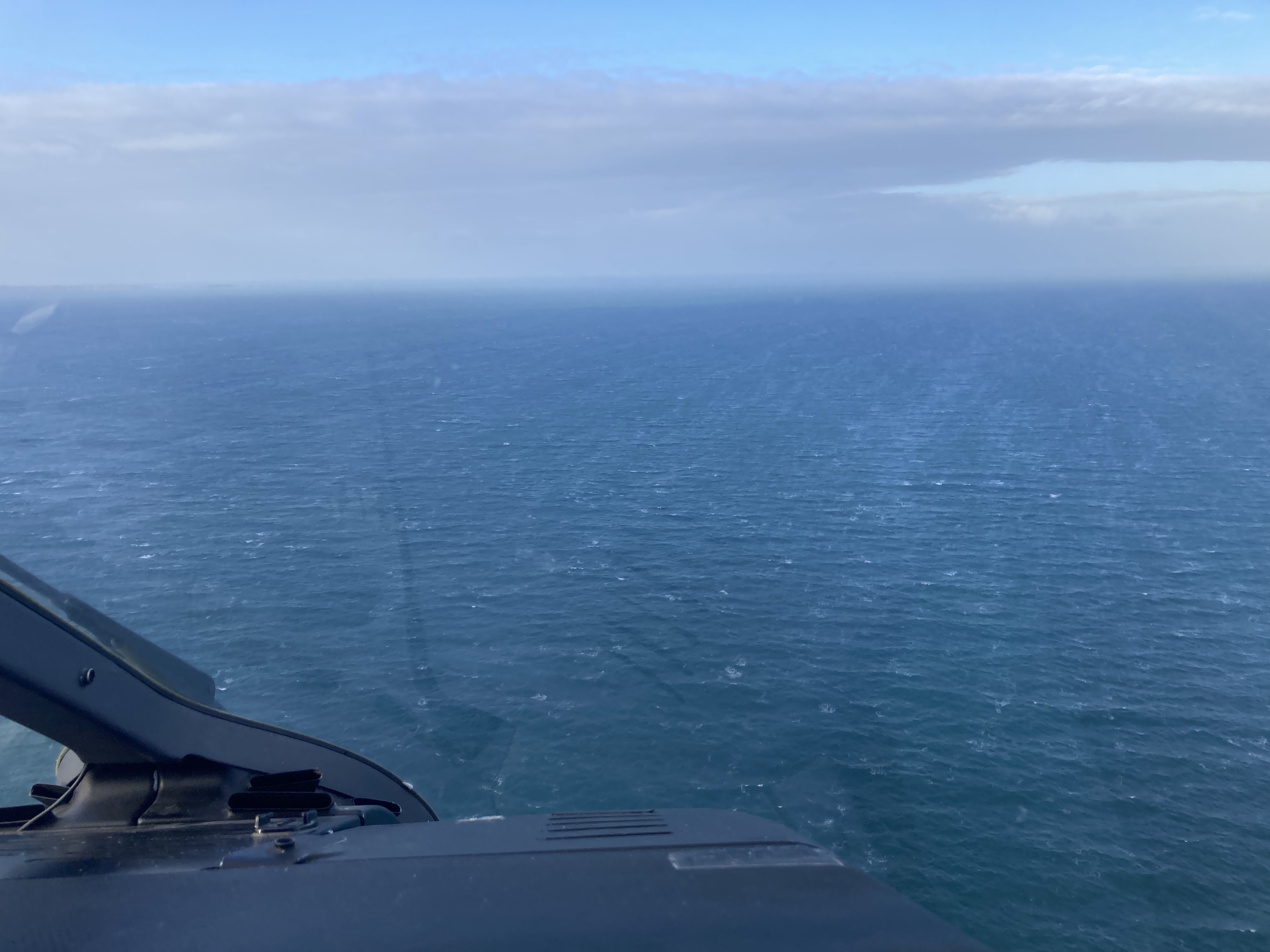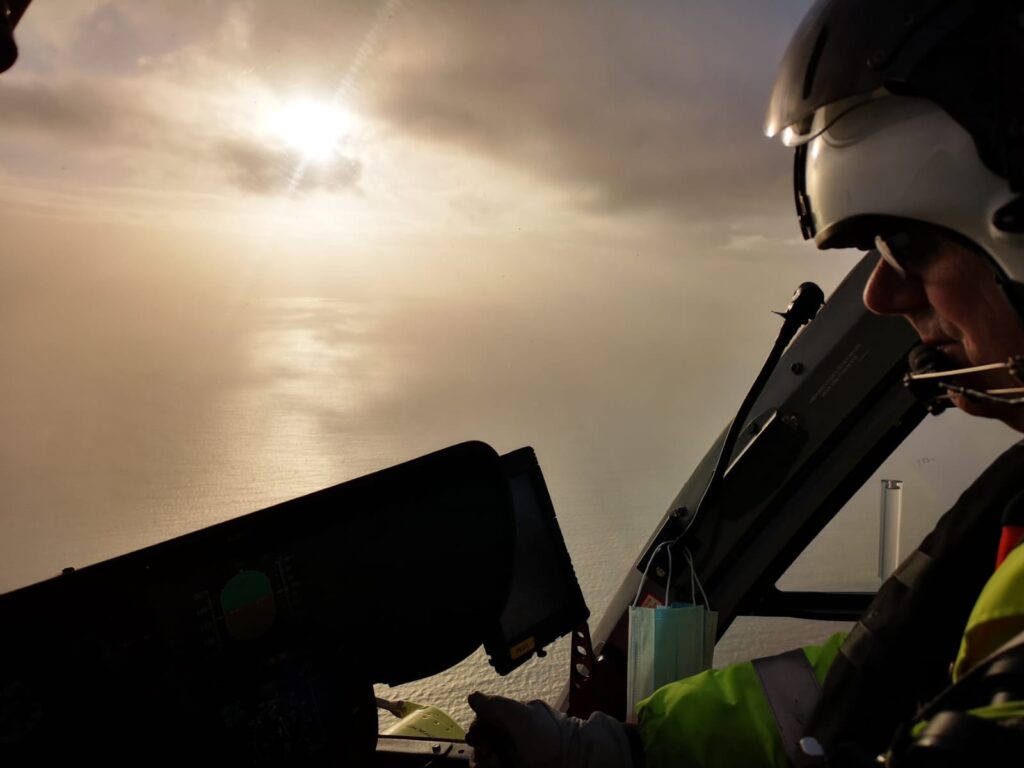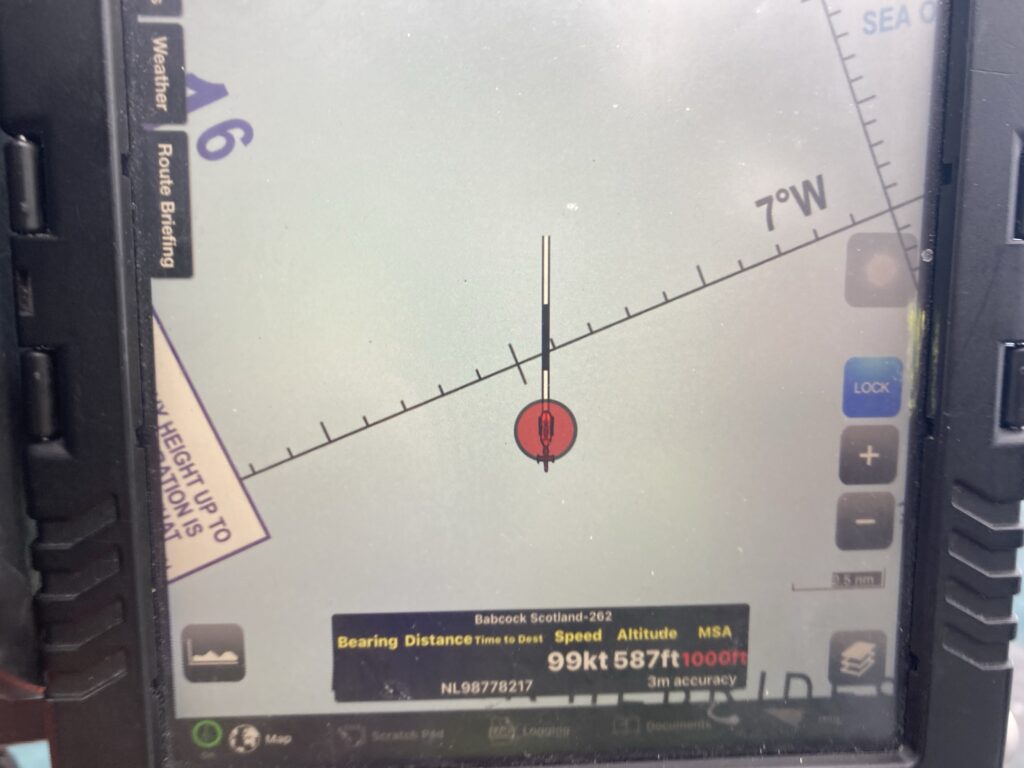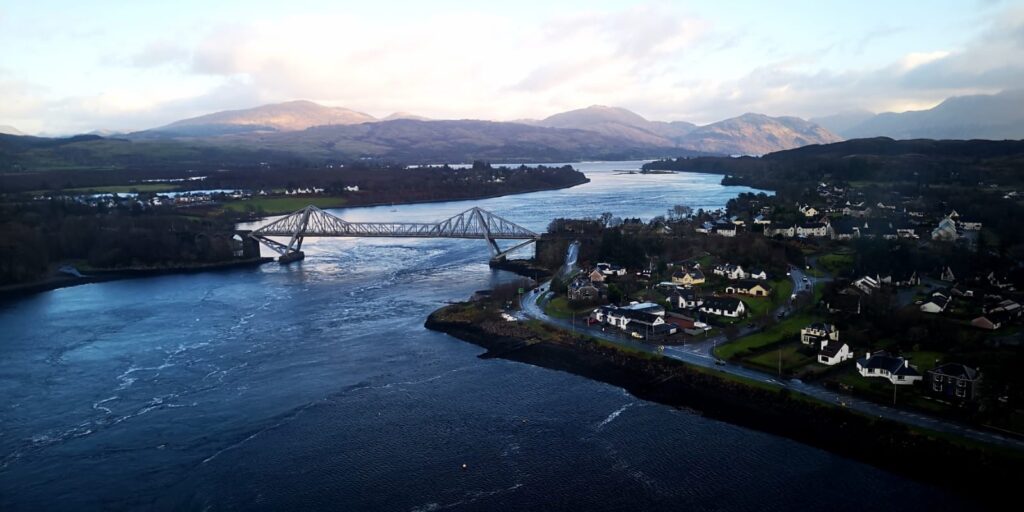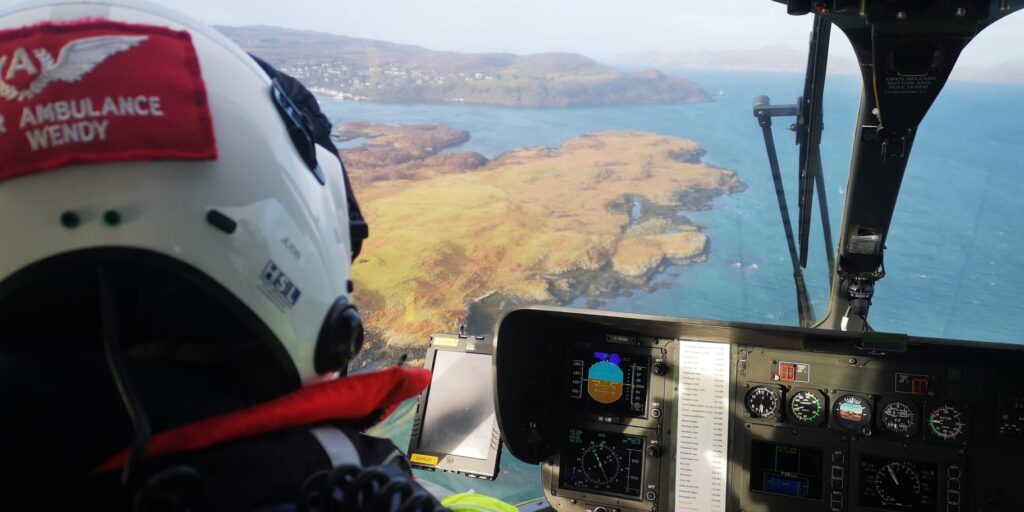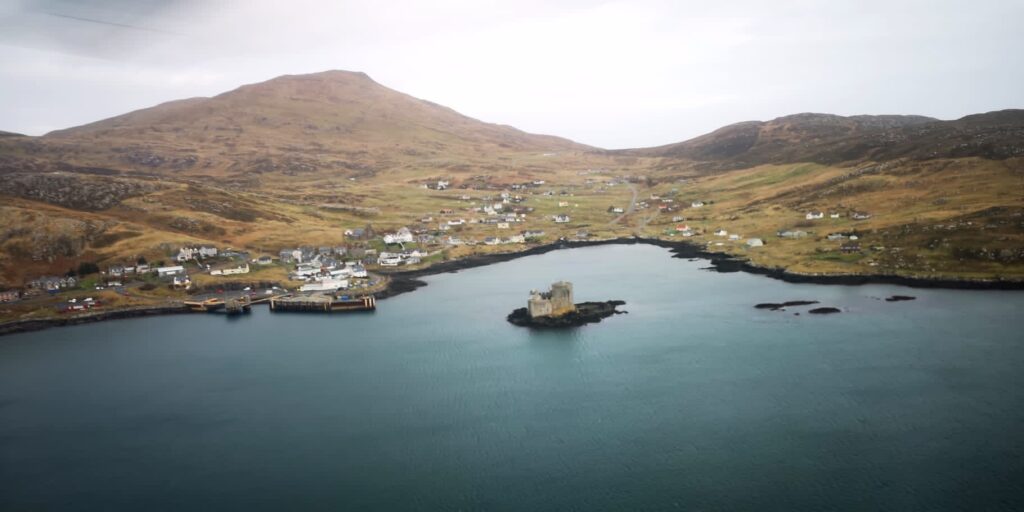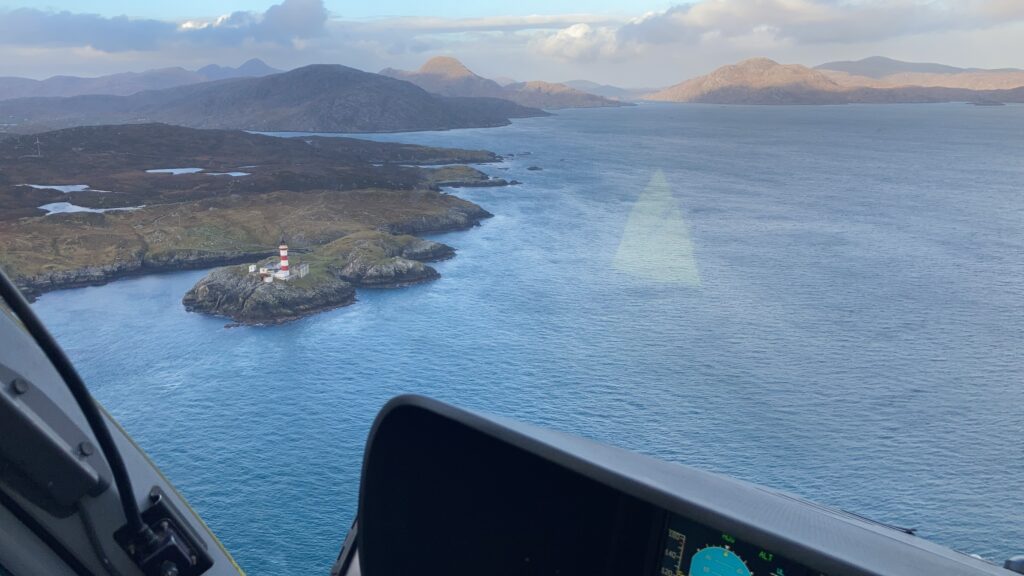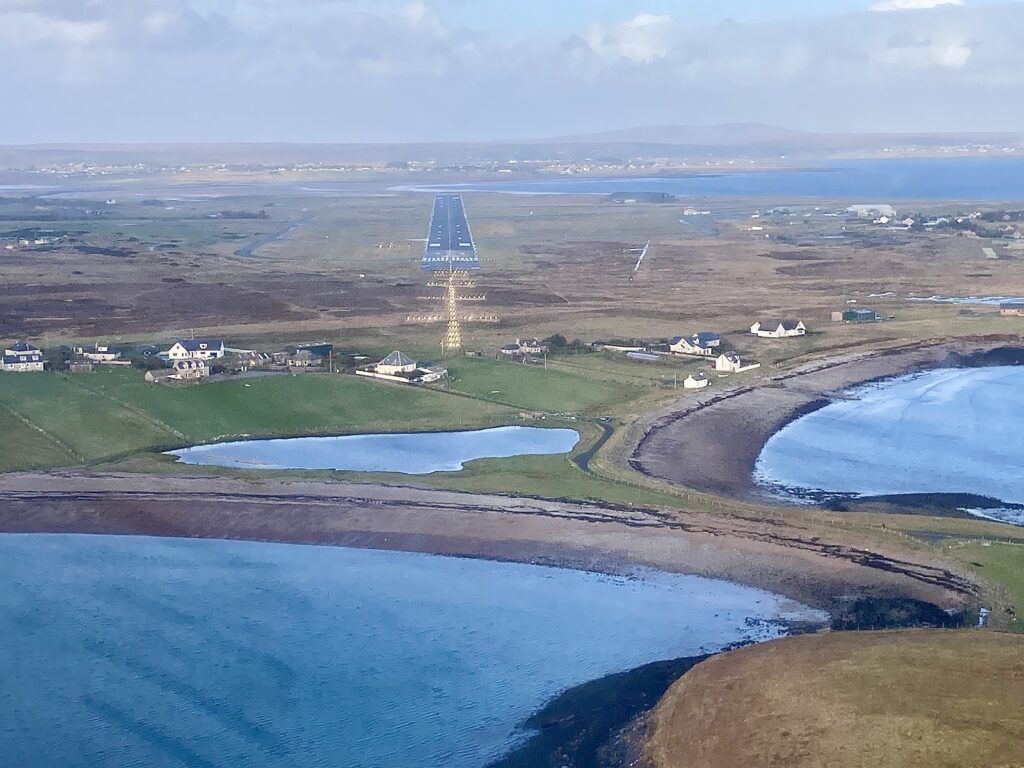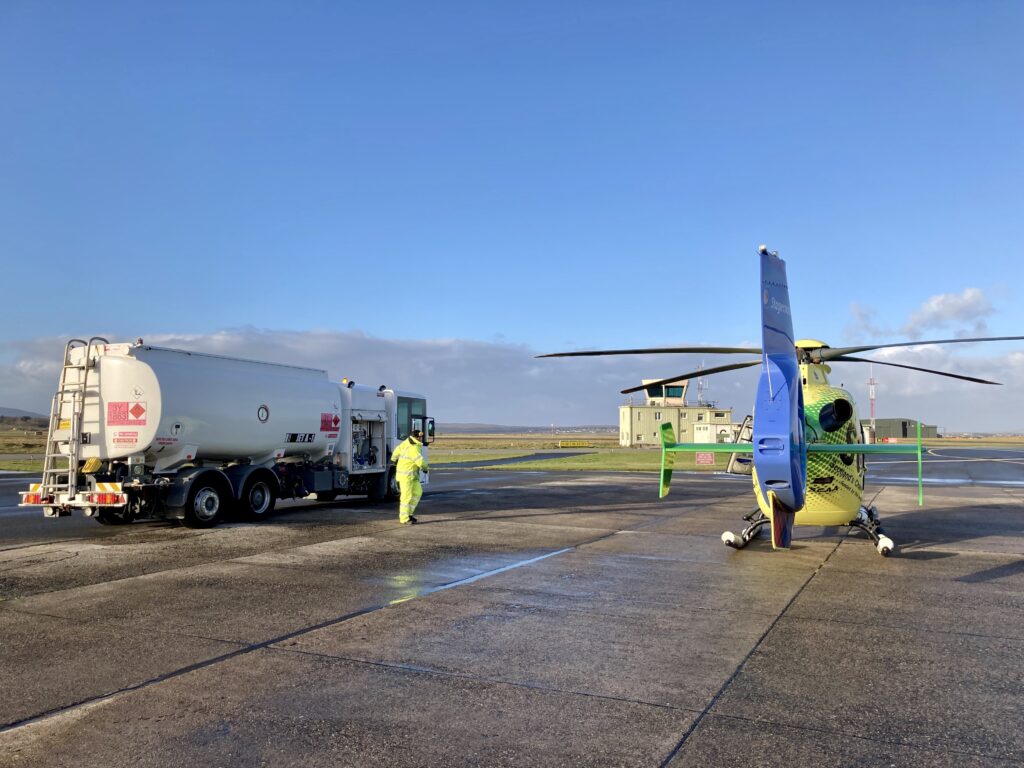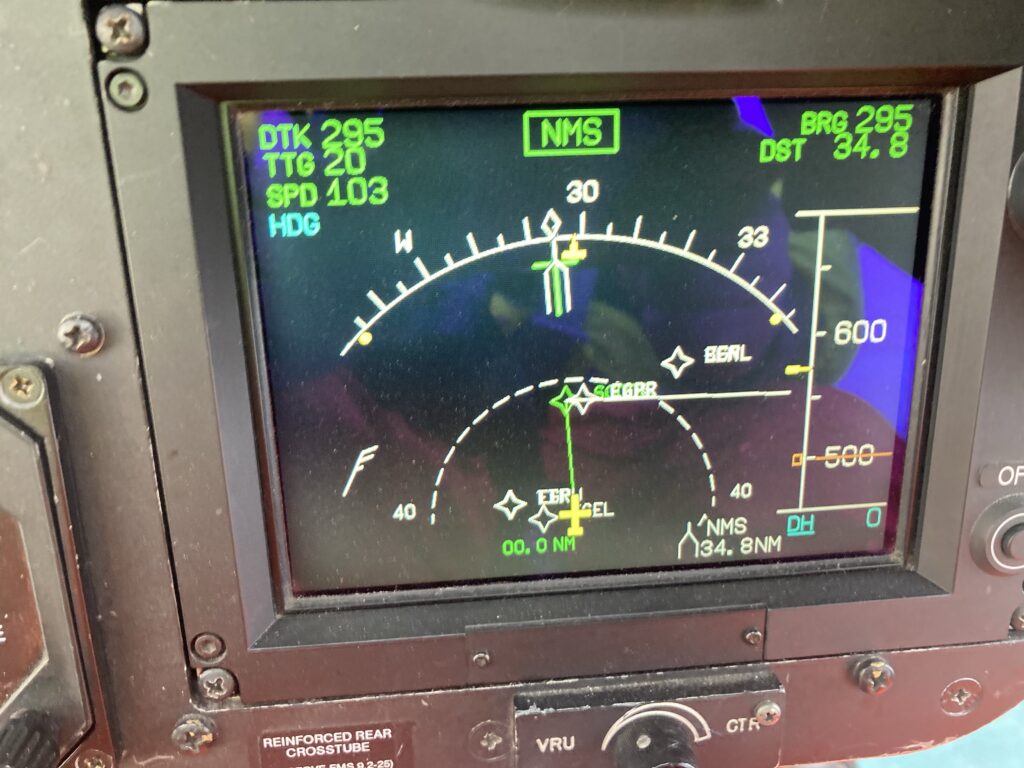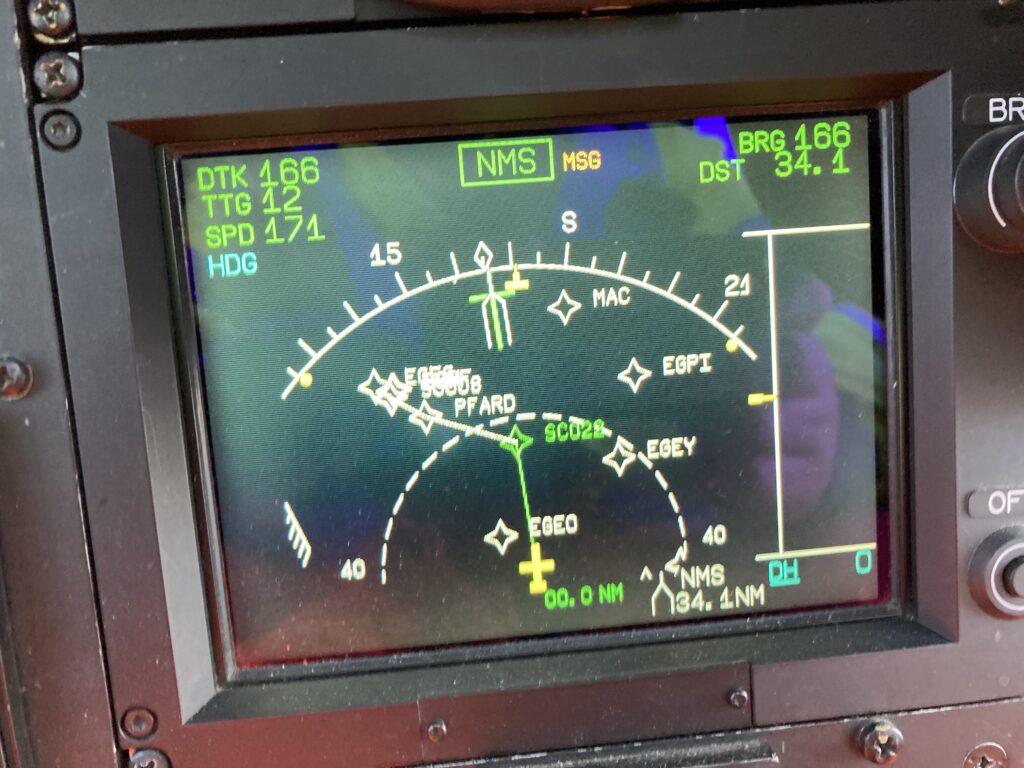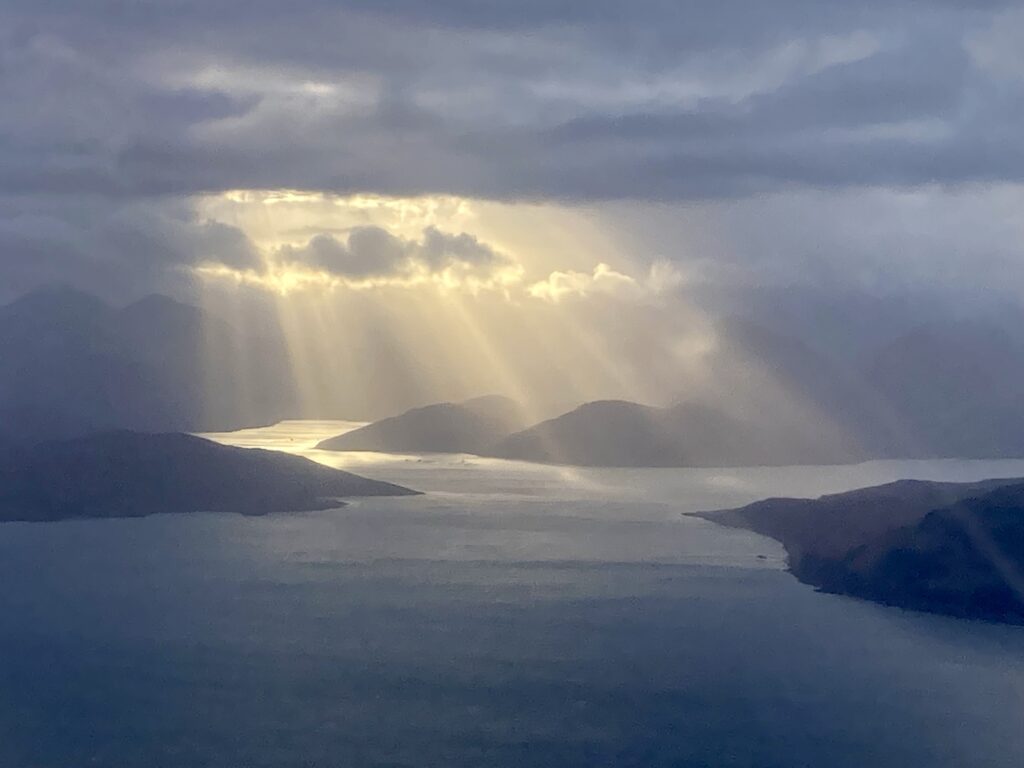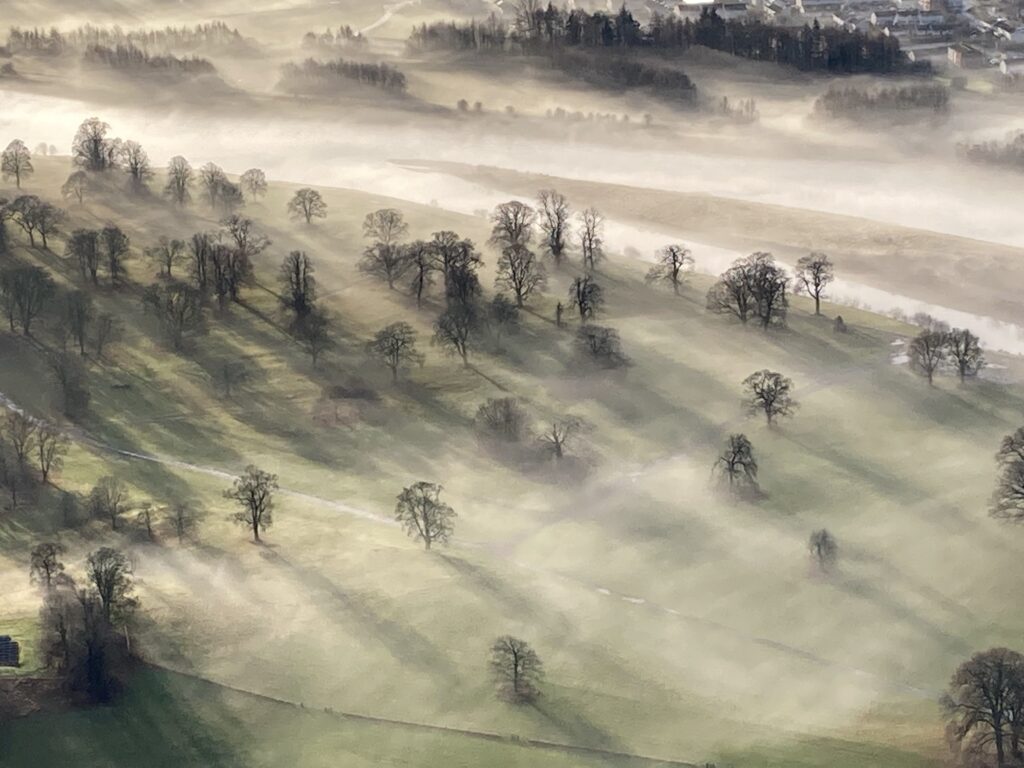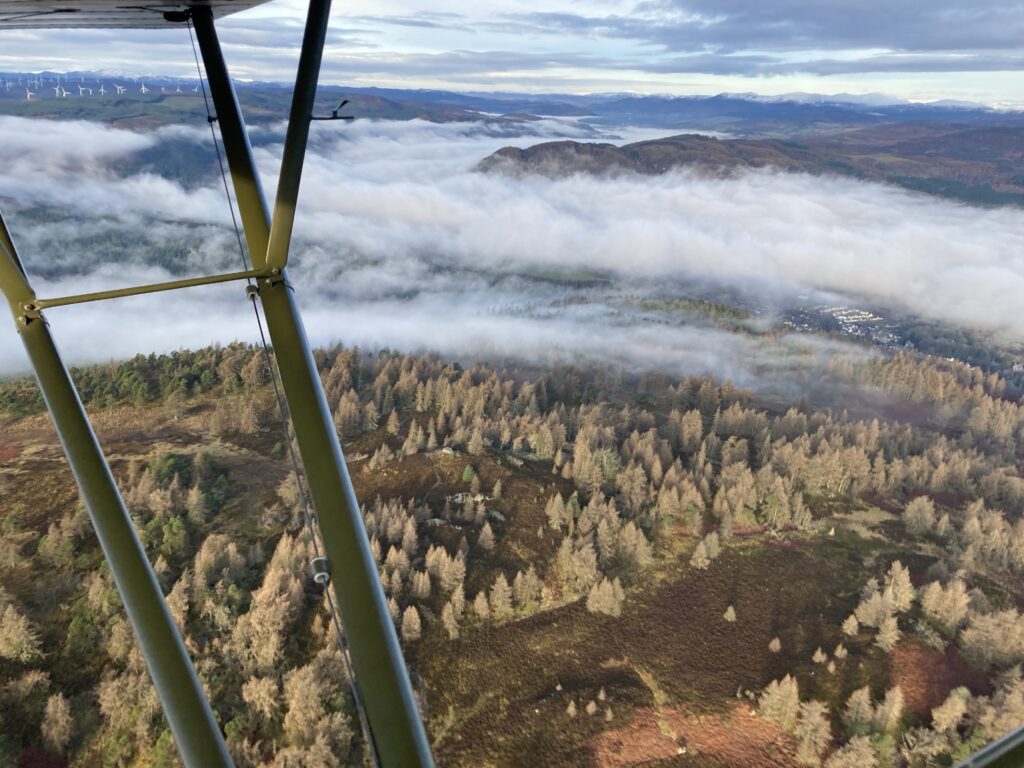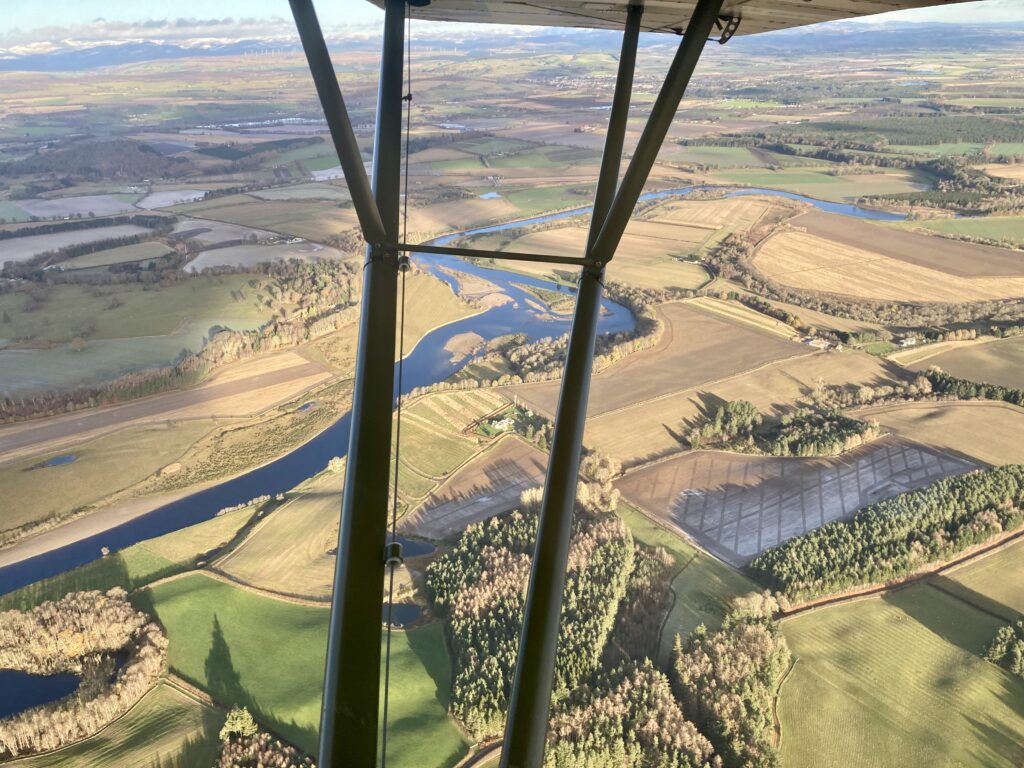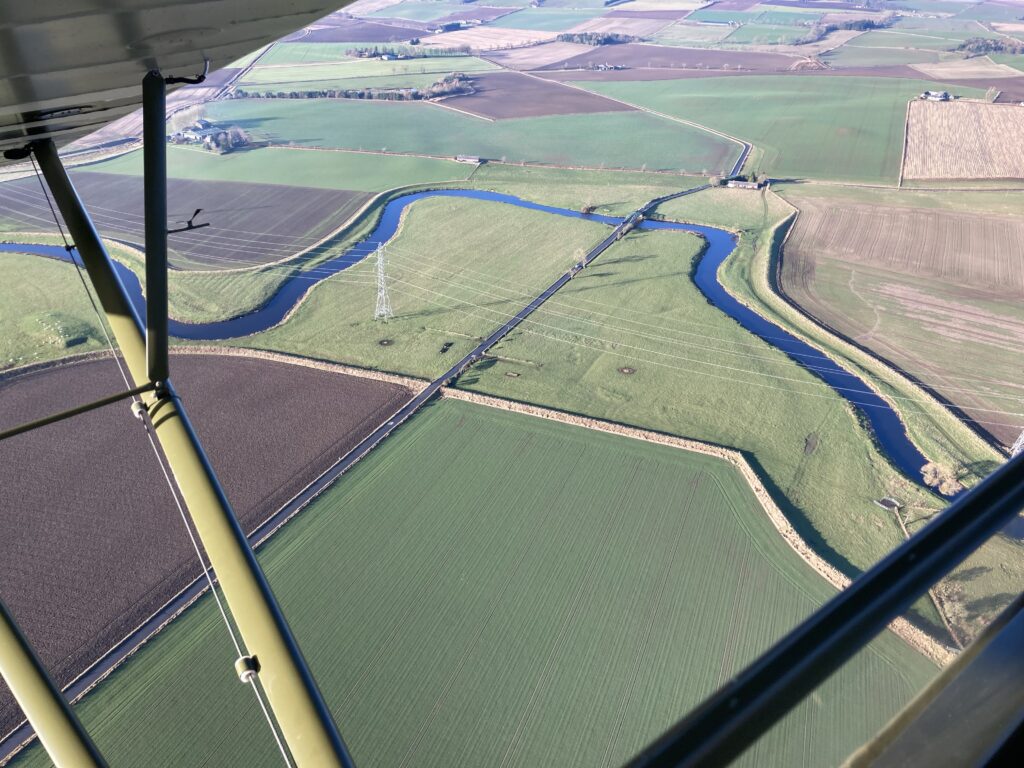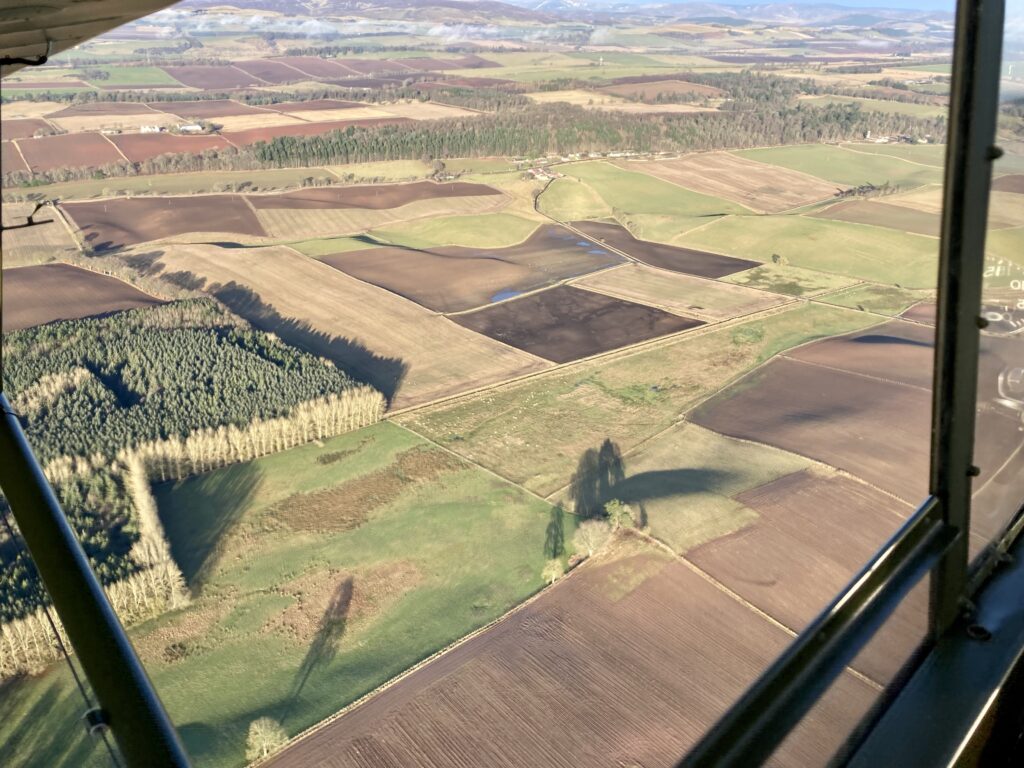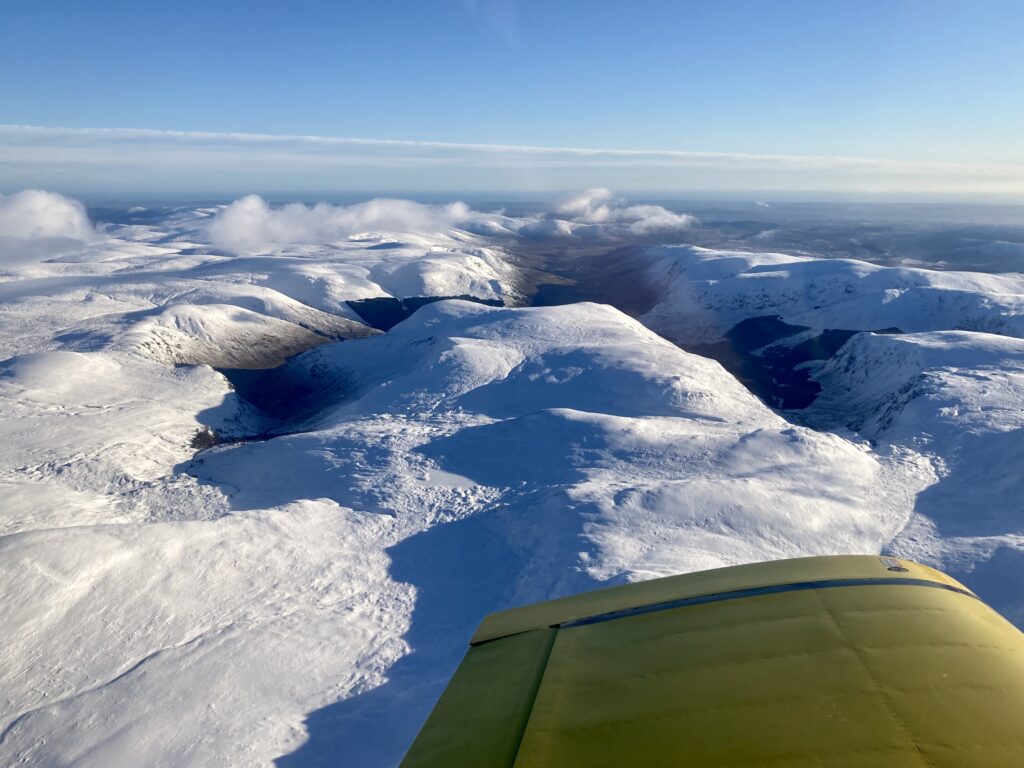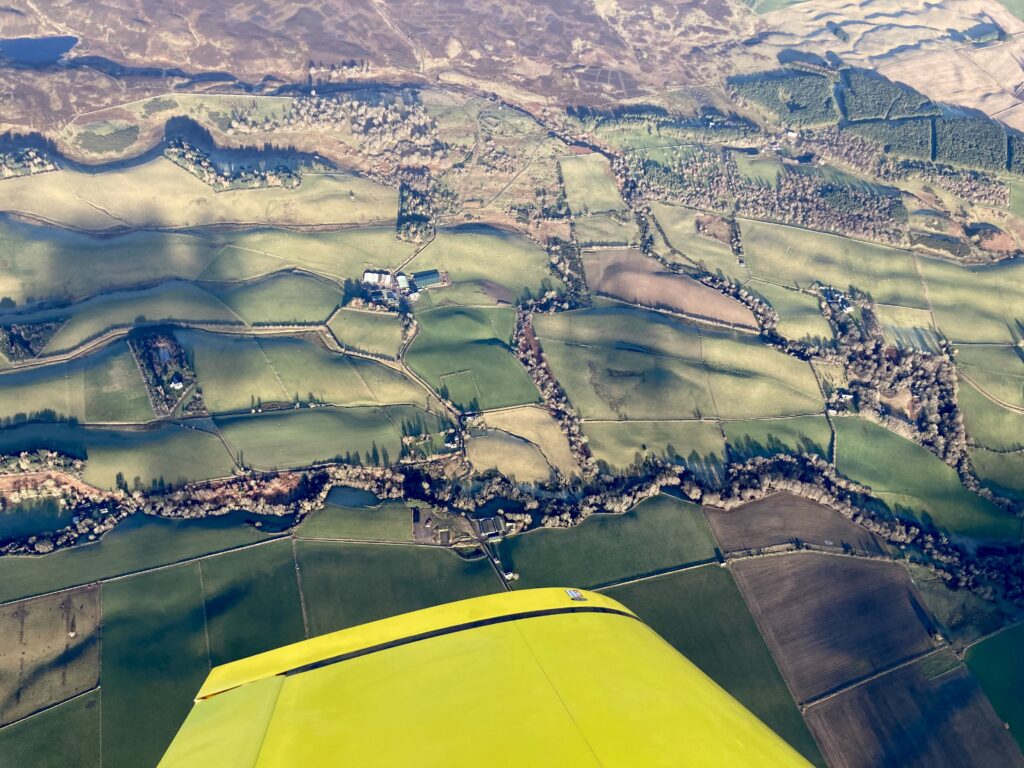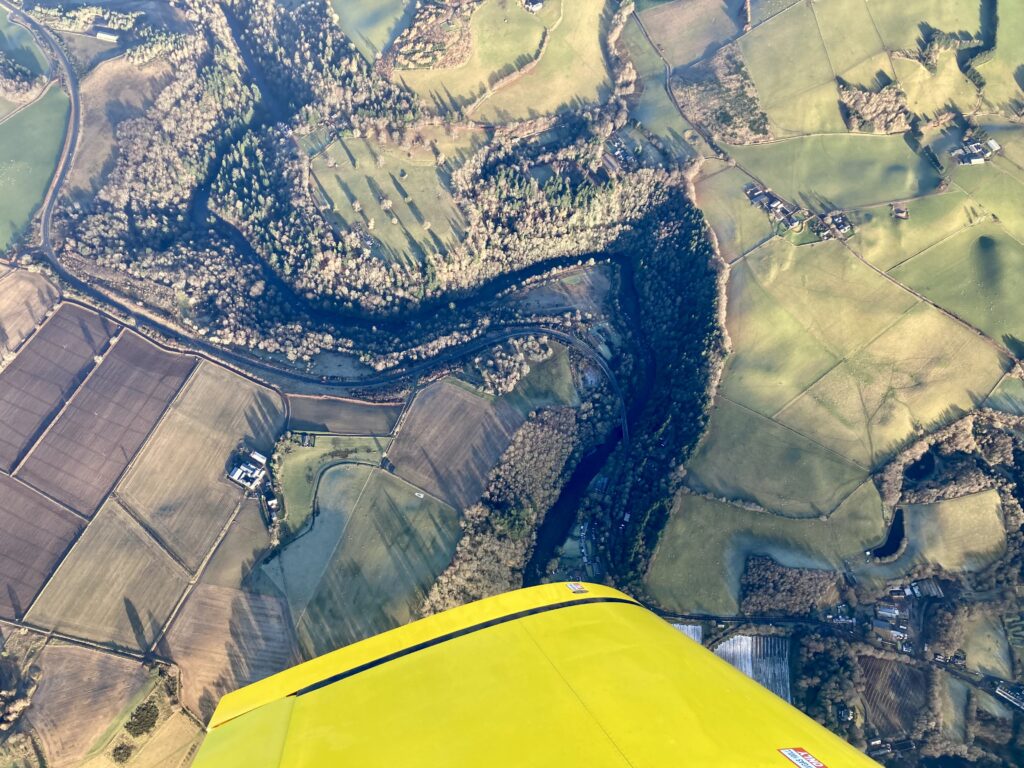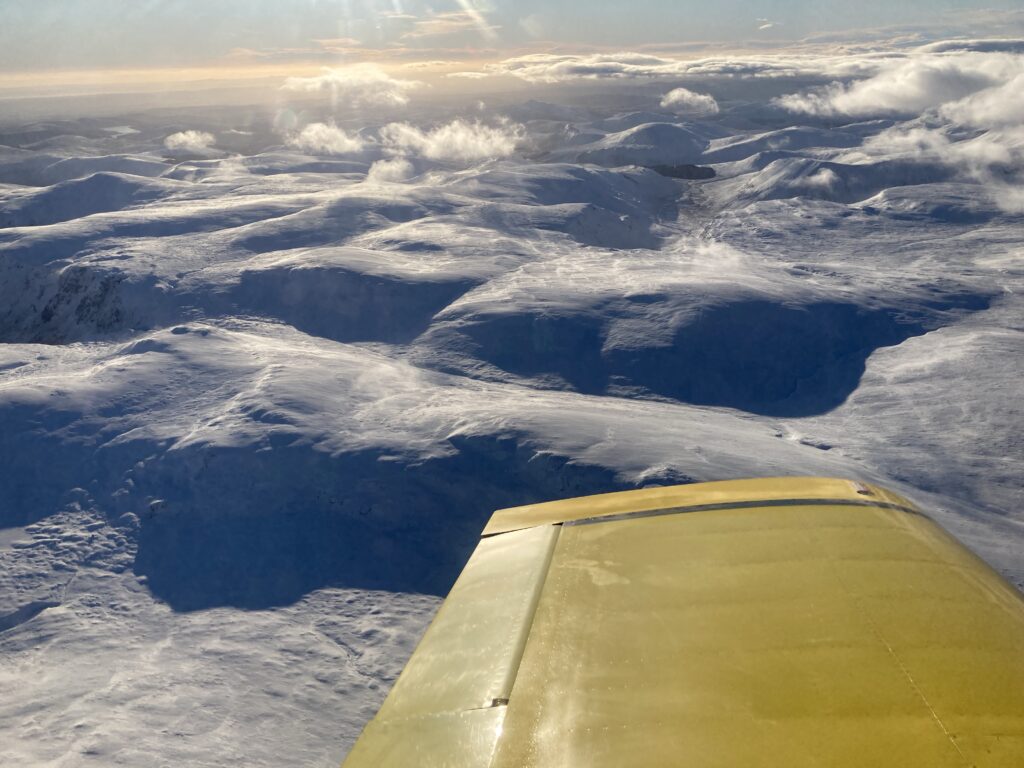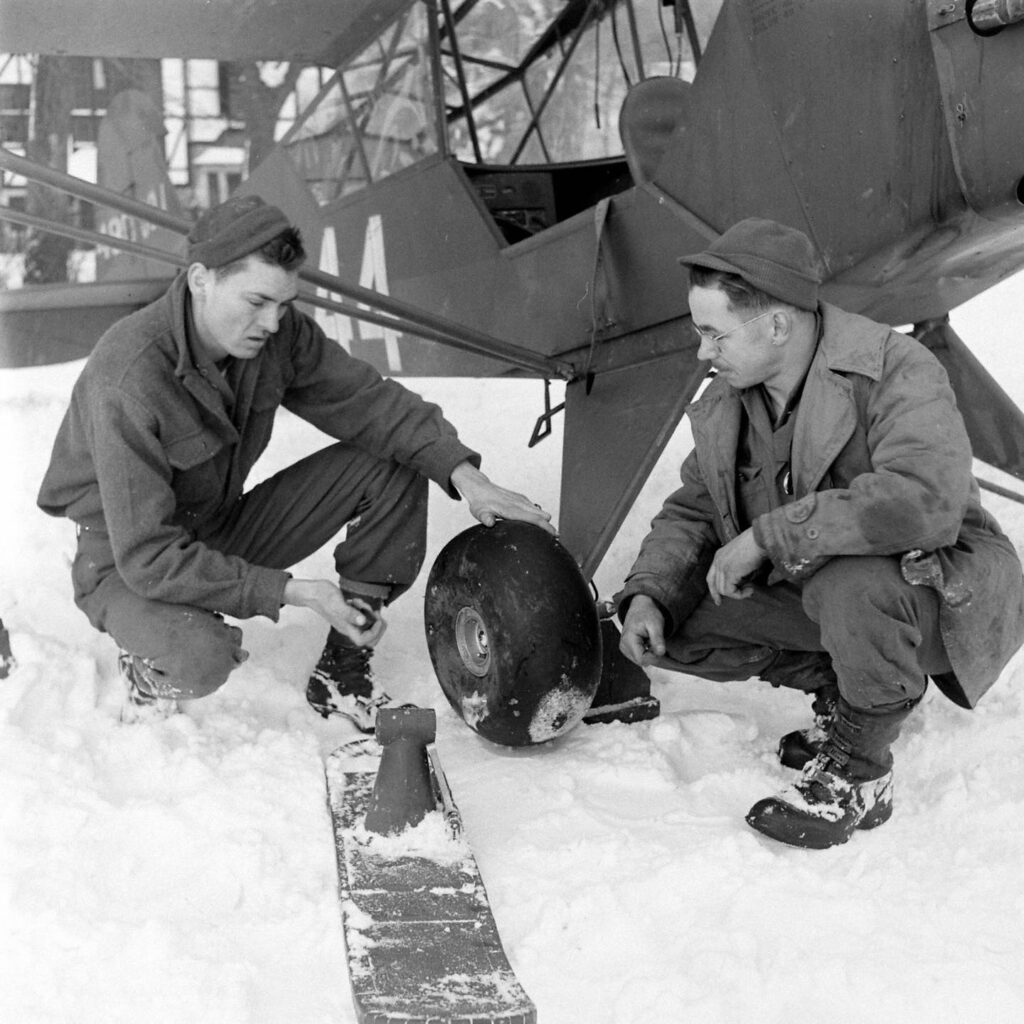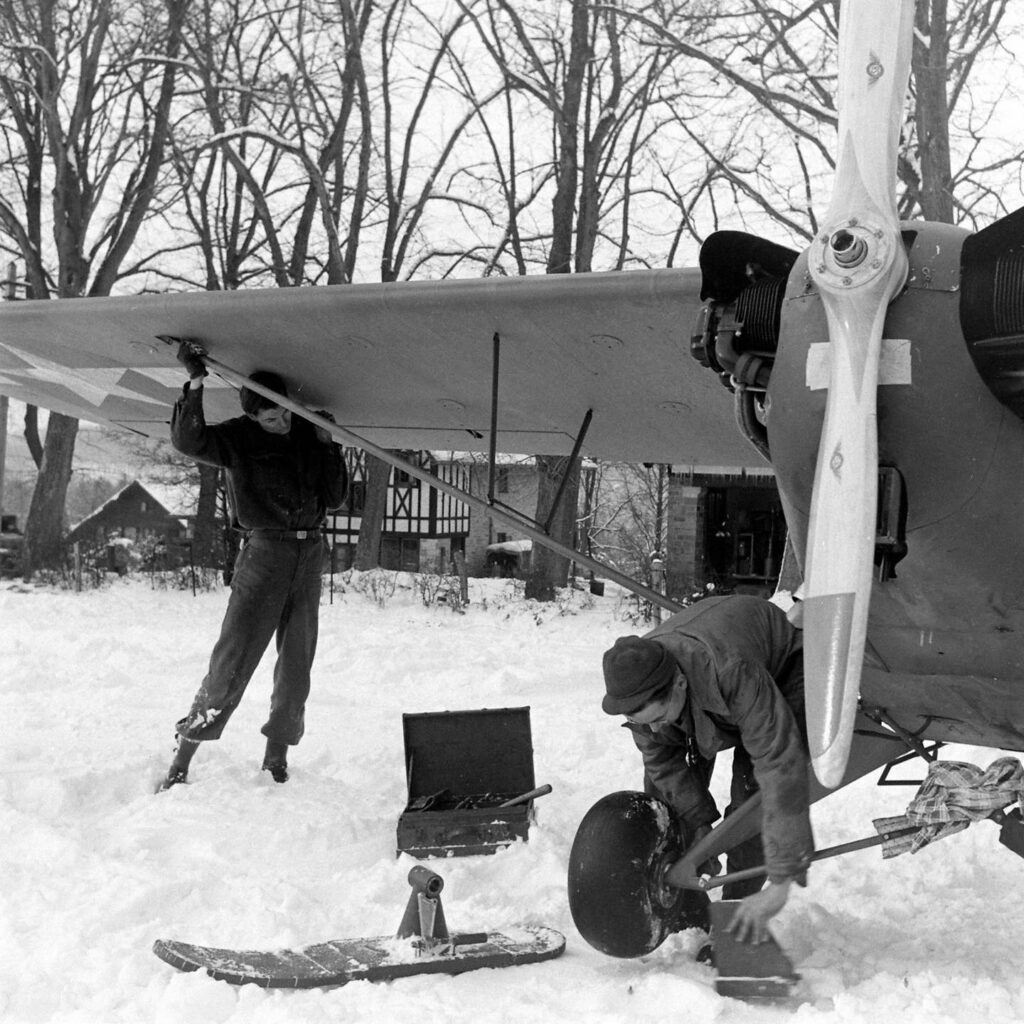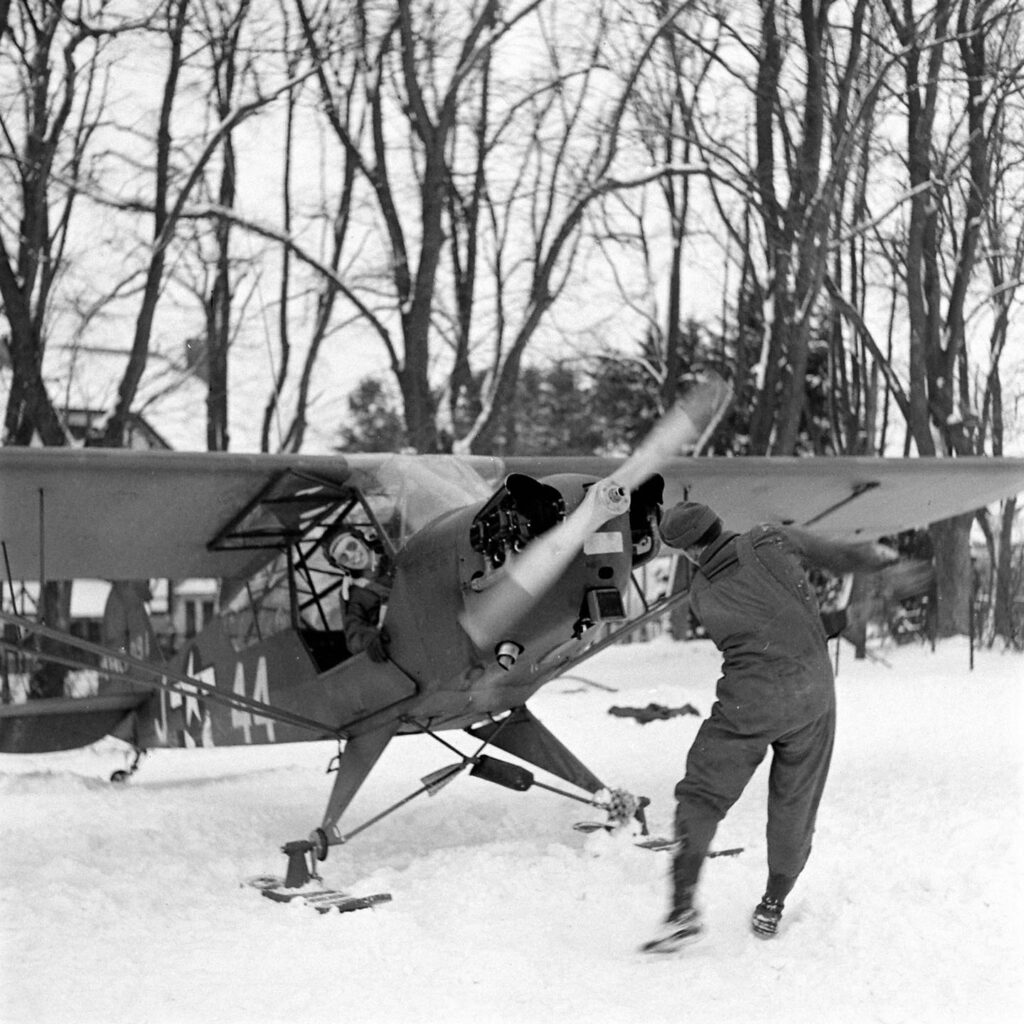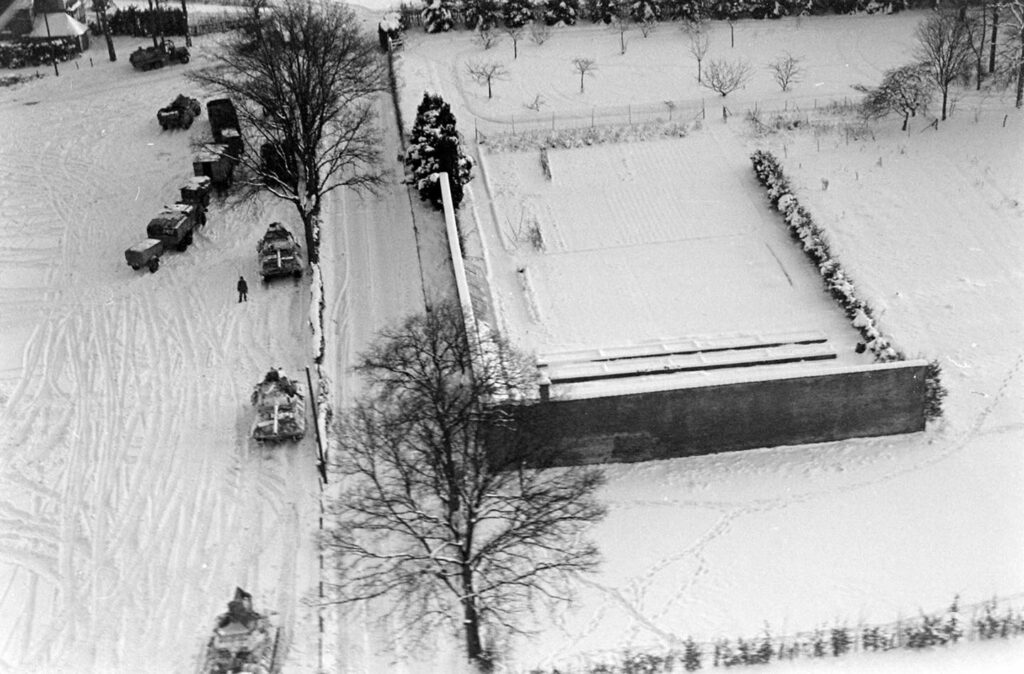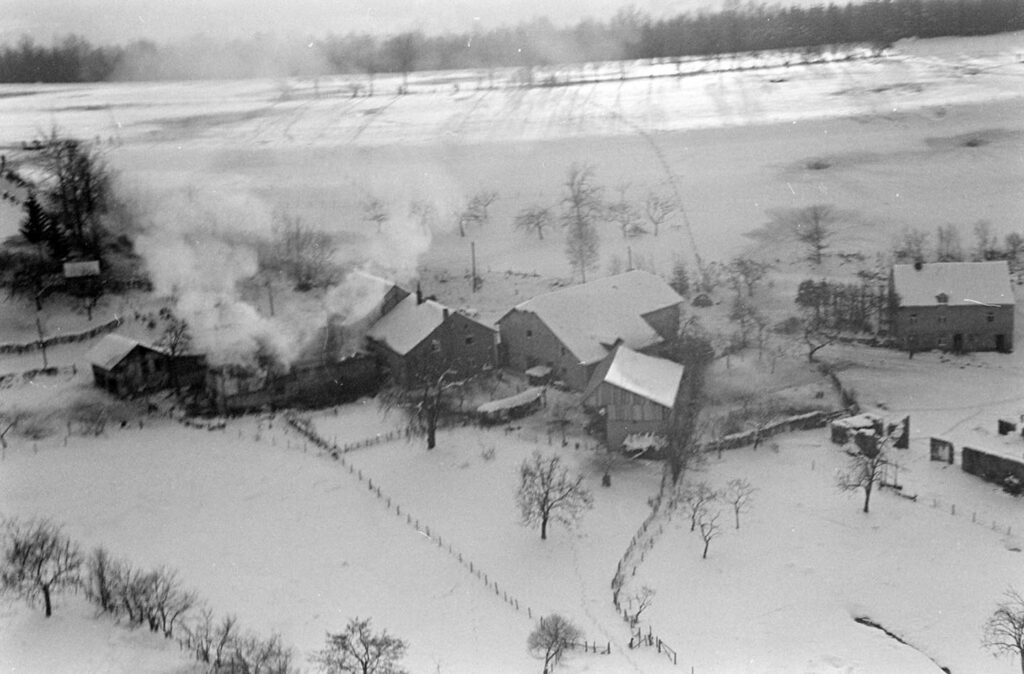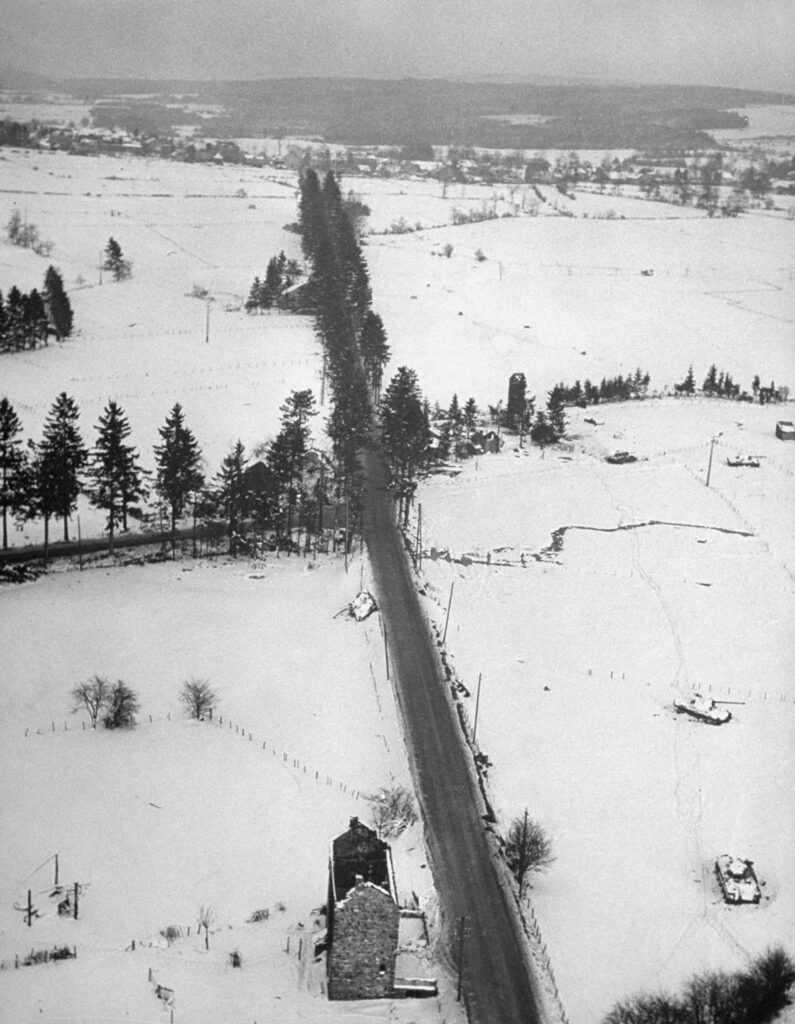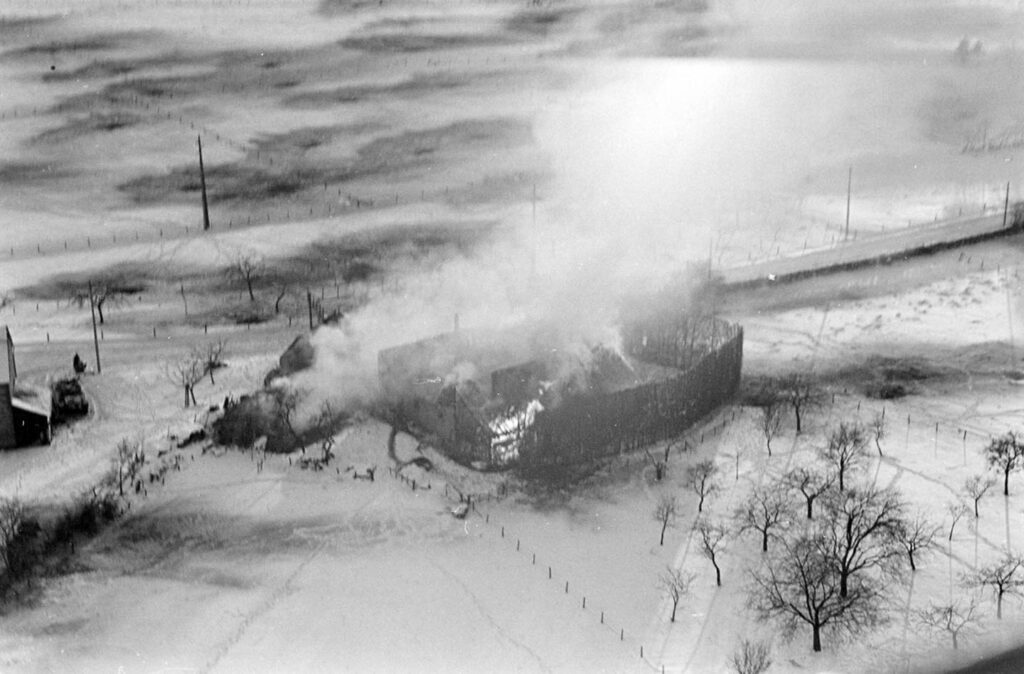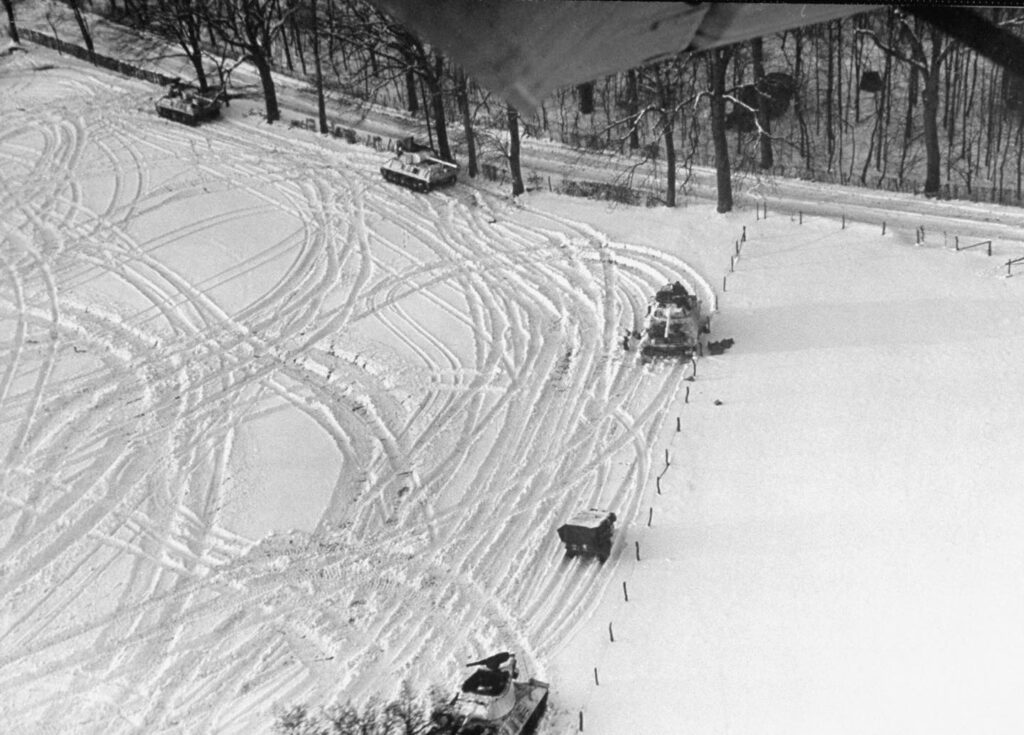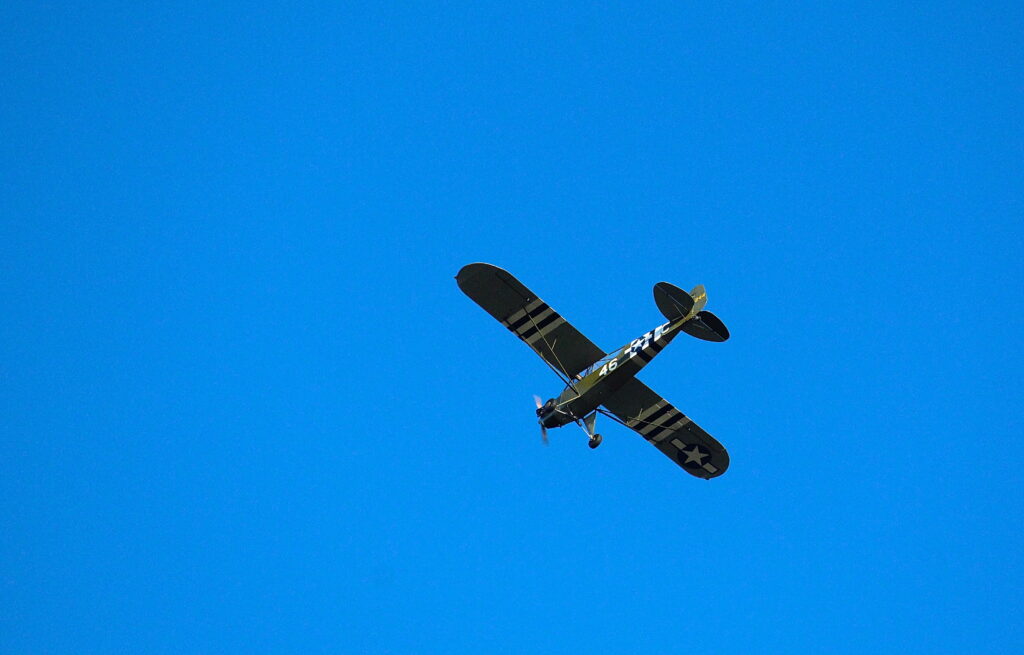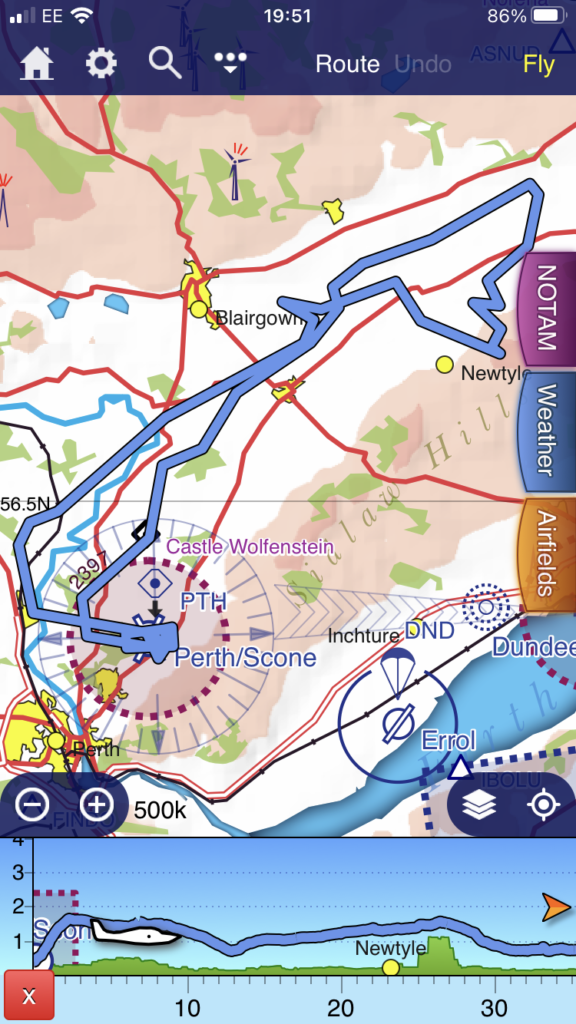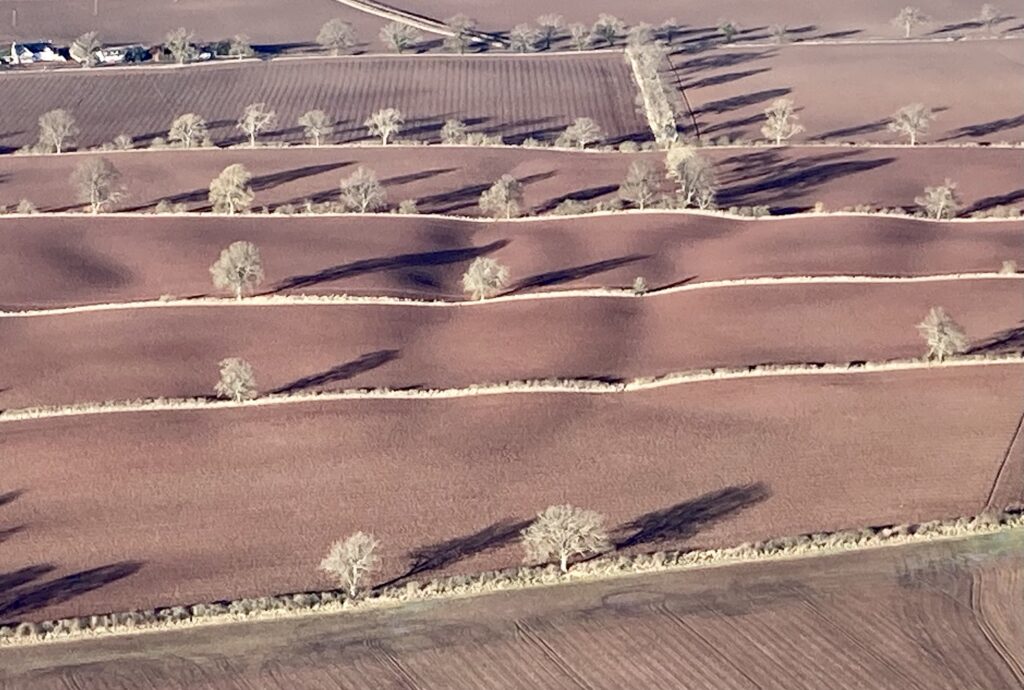Almost time for the annual on the Cub so it was a bit of a frenzy getting some flying in before it went offline for a few weeks:
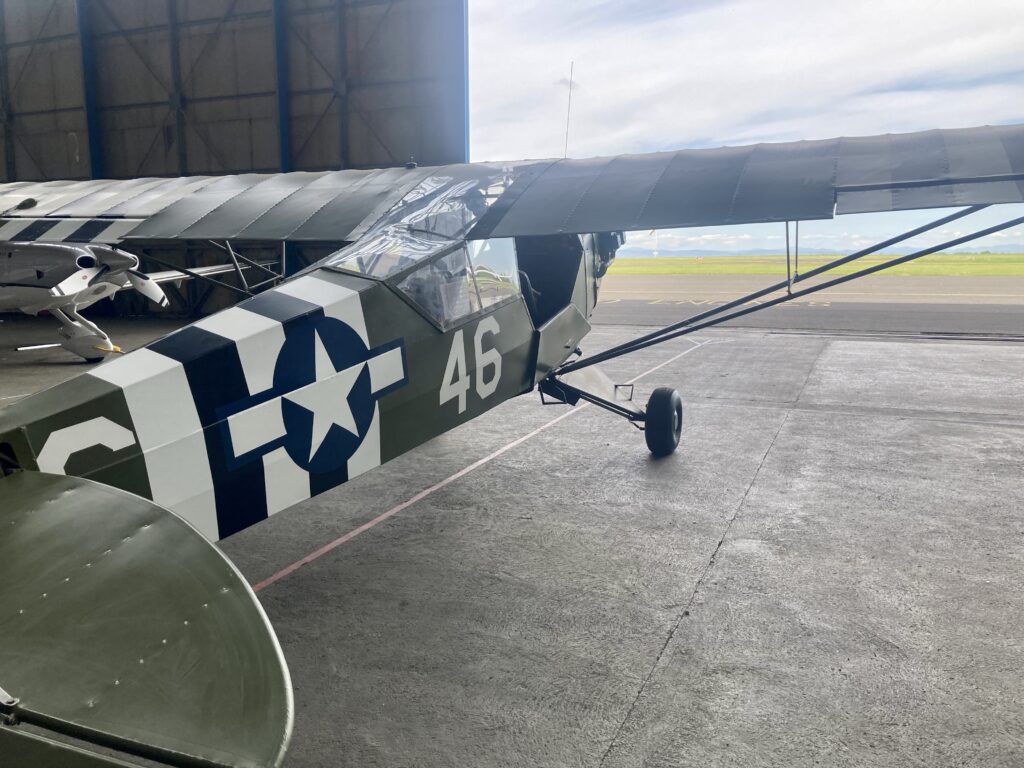
Actually, not really a frenzy. That kind of implies non-stop back to back flights from sunrise to sunset. Unfortunately the state of the world at the moment means that the price of Avgas has shot up and is now over £2.60 per litre. Filling the small tank of the Cub is not so bad, but stay tuned for when I filled the RV for a day trip to Northern Ireland…
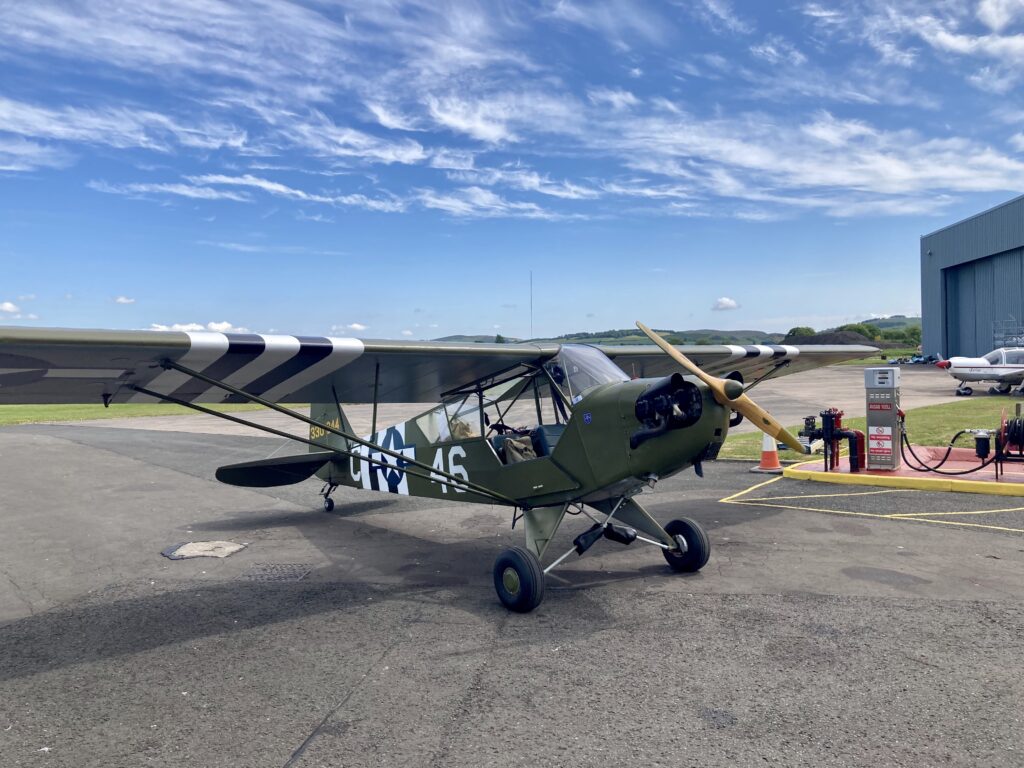
Chugging along in the Cub we came across this strange feature near the old disused airfield at Kinnell. It looks like an old railway cutting has been sealed up and turned into a long thin lake:
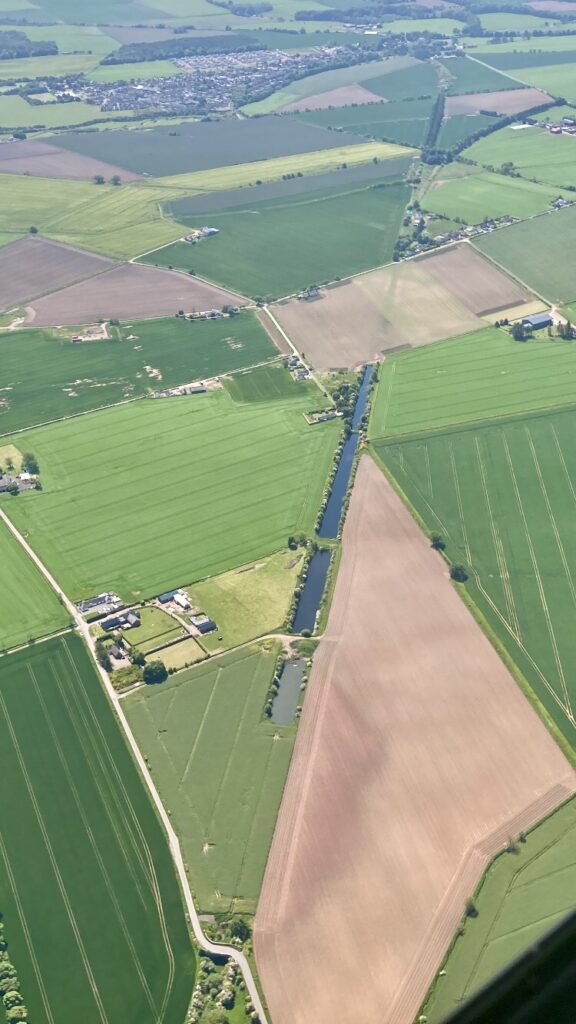
It’s even on the Ordnance Survey map. Maybe it’s a fishing pond?
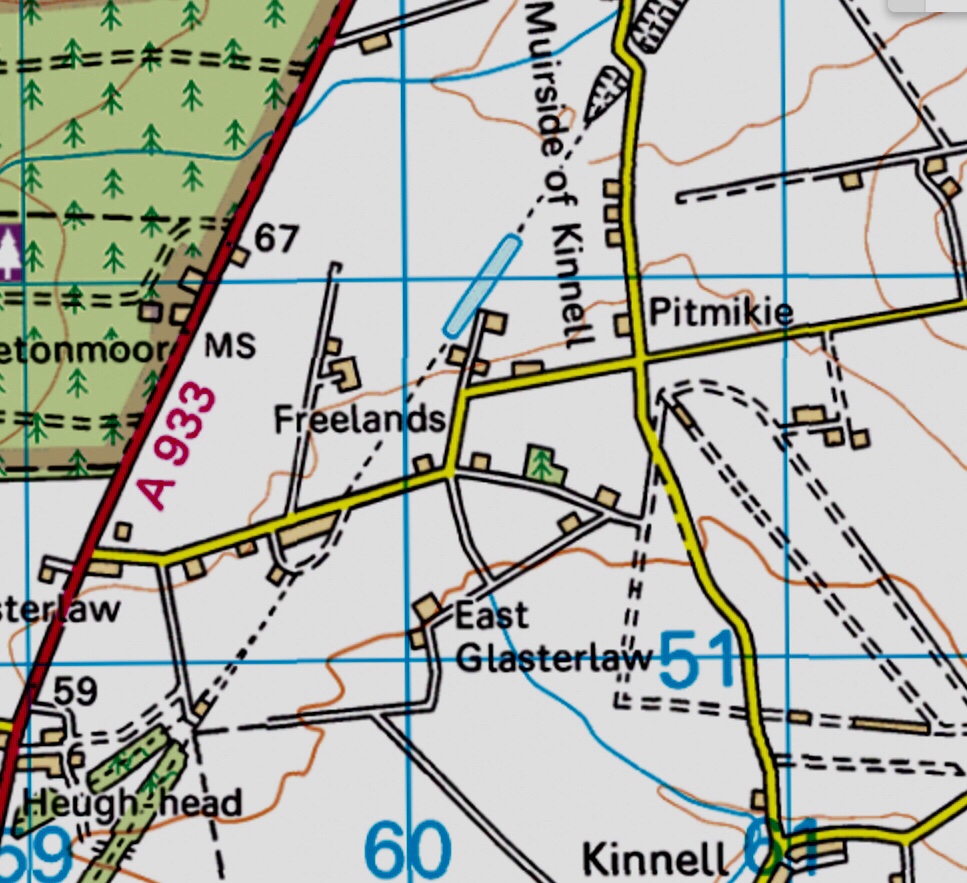
Cub frenzy complete, I decided to give the aircraft a bit of a clean. It does not fly fast enough to blow the fine hangar dust off, and I can only reach part of the upper wing surface when standing on the ground:
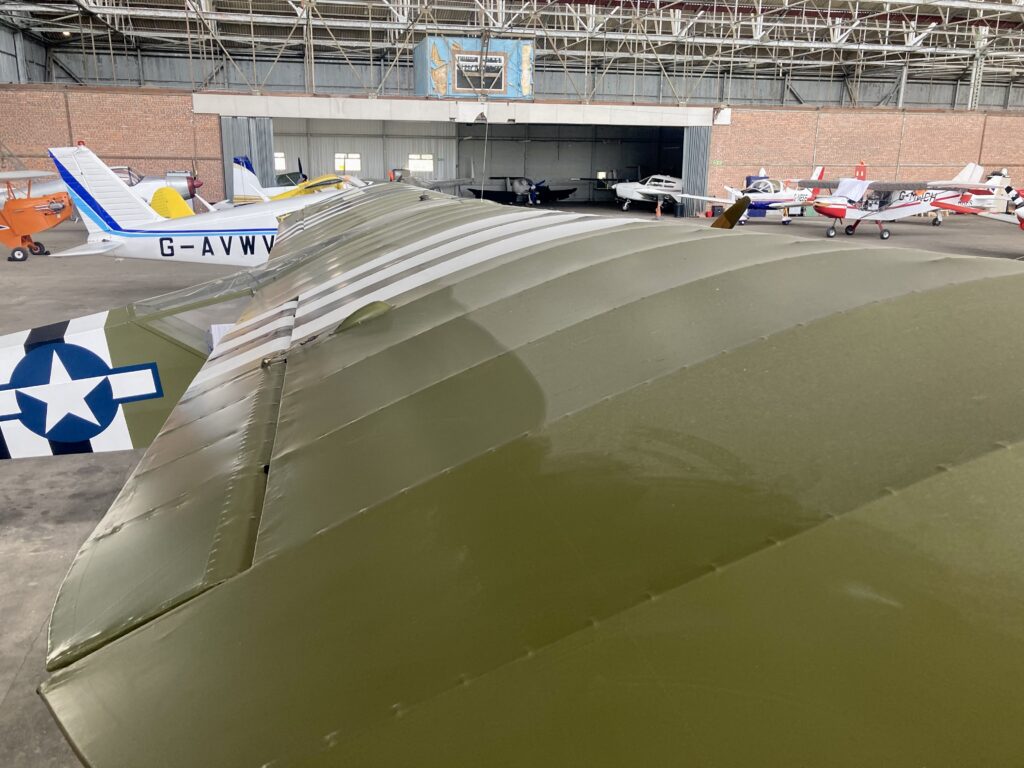
With the help of the step ladder I was able to clean all the top surface with these chemical free baby wipes. Actually touching the surface is a great way to ensure that all the fabric and internal ribs are in good condition. If something is broken inside it probably won’t feel right…
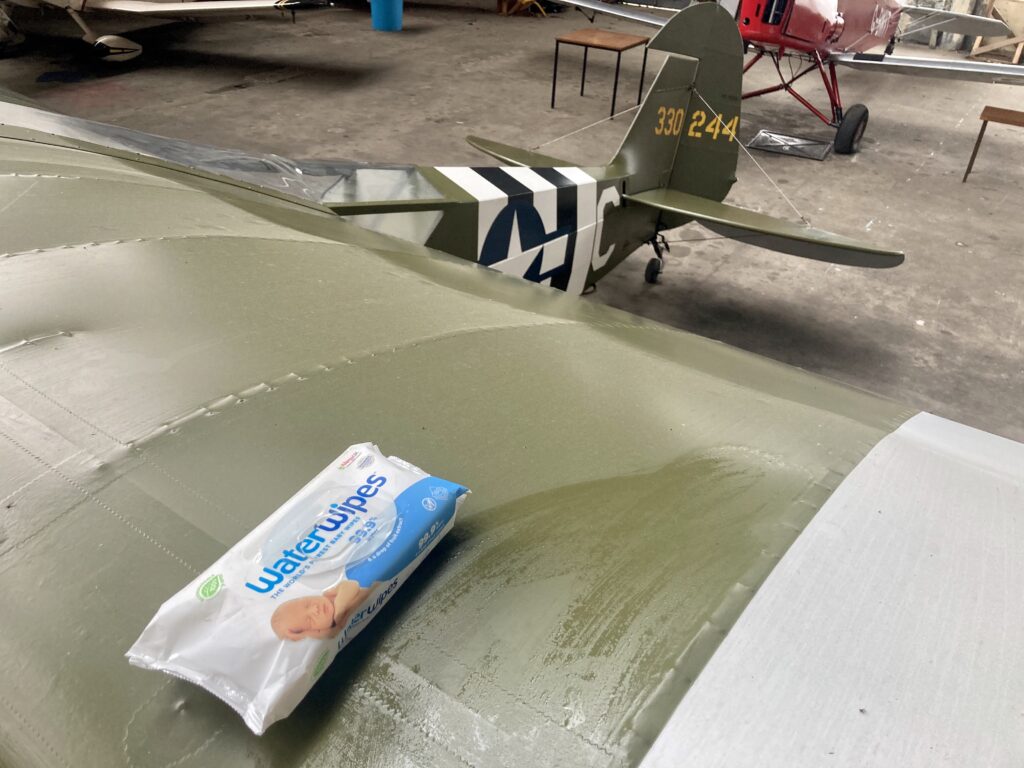
A lovely clean shiny aircraft ready to visit the engineers:
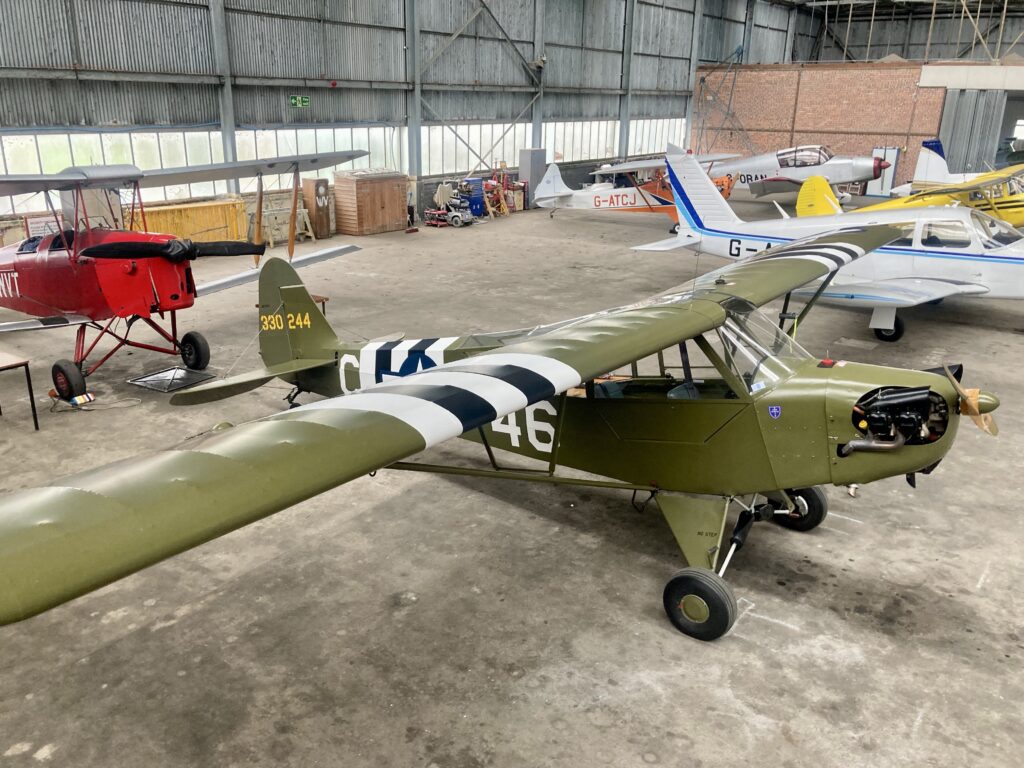
A day later in the maintenance hangar…
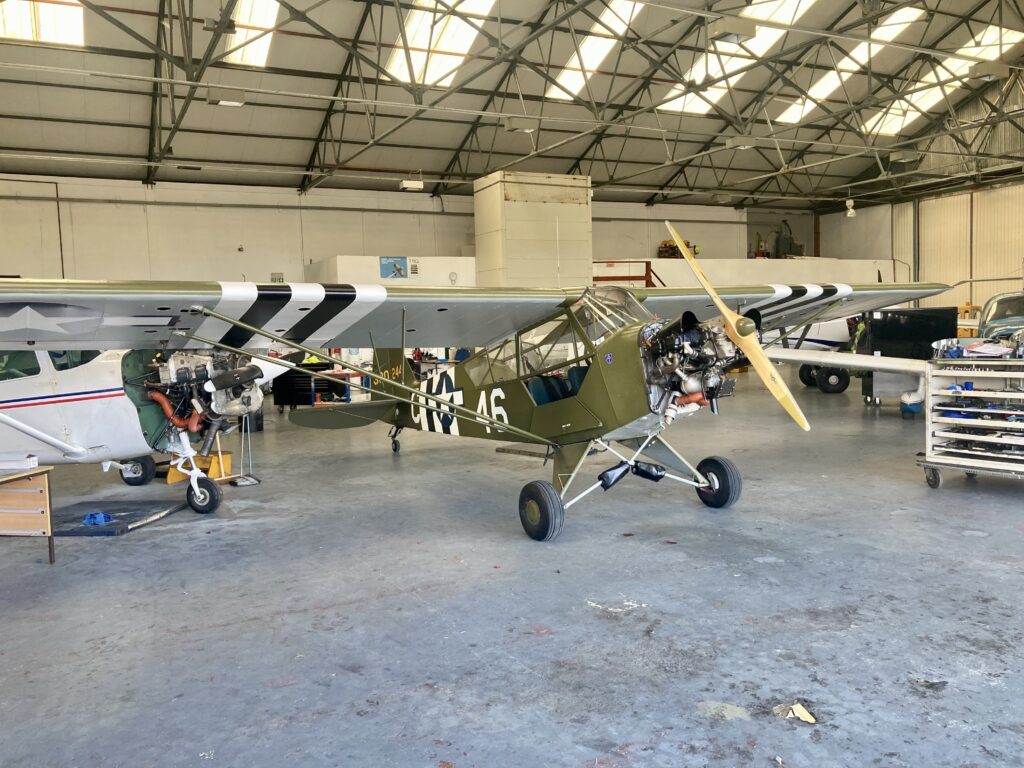
By then I was back to work, busily shuttling patients around Scotland for the ambulance service. More opportunities to see strange things from the air. Near Kilmalcolm we saw these concrete structures in a field:
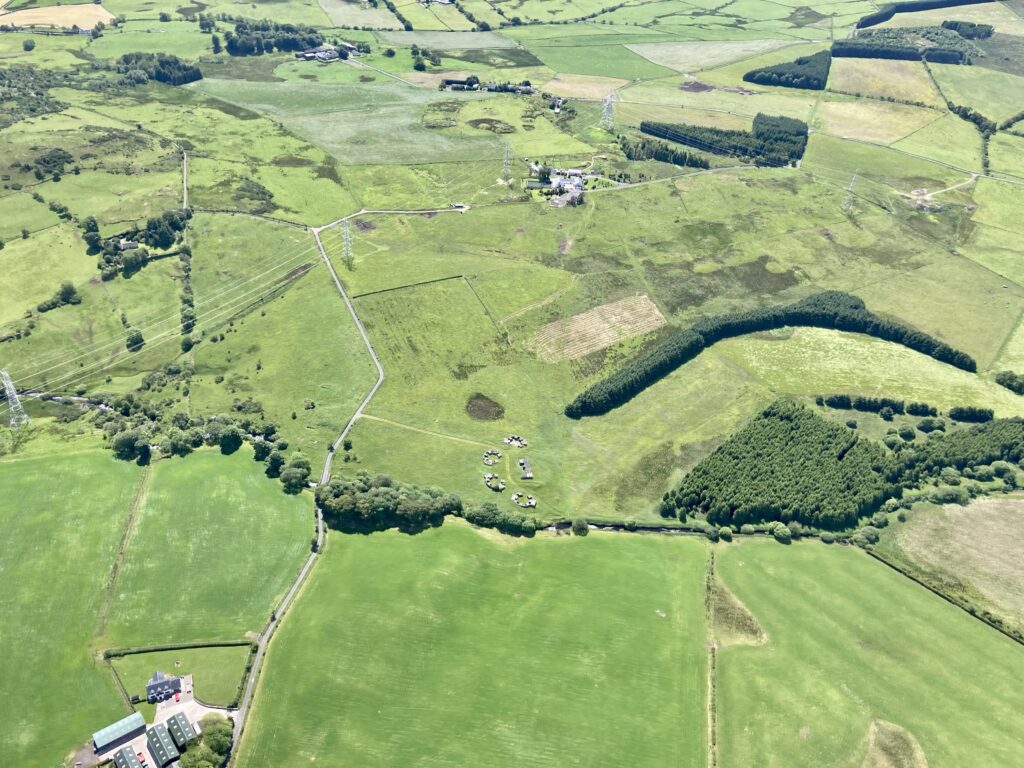
It turns out that this is the site of an anti-aircraft battery from WW2. There are several of these dotted around the periphery of Glasgow. One even serves as the foundations for a uniquely shaped house. Zooming in you can see the four distinctive gun positions and the control/admin block:
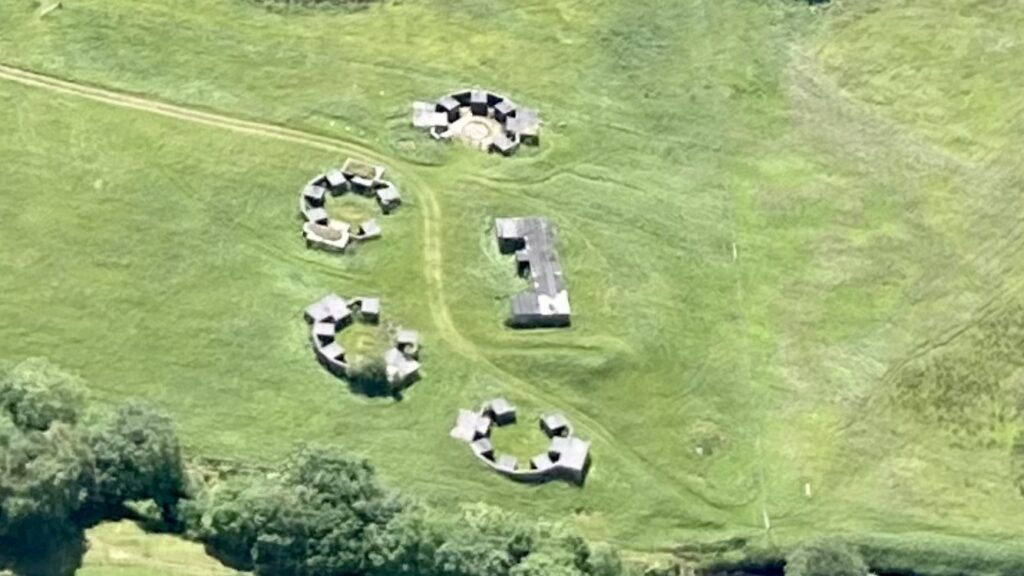
Later that same day we came across a submarine getting a helping hand back into the base at Faslane. In this zoomed in picture the tow line is just visible running from the tug on the right to the bow of the sub. Not sure if it’s standard procedure or if it was limping home:
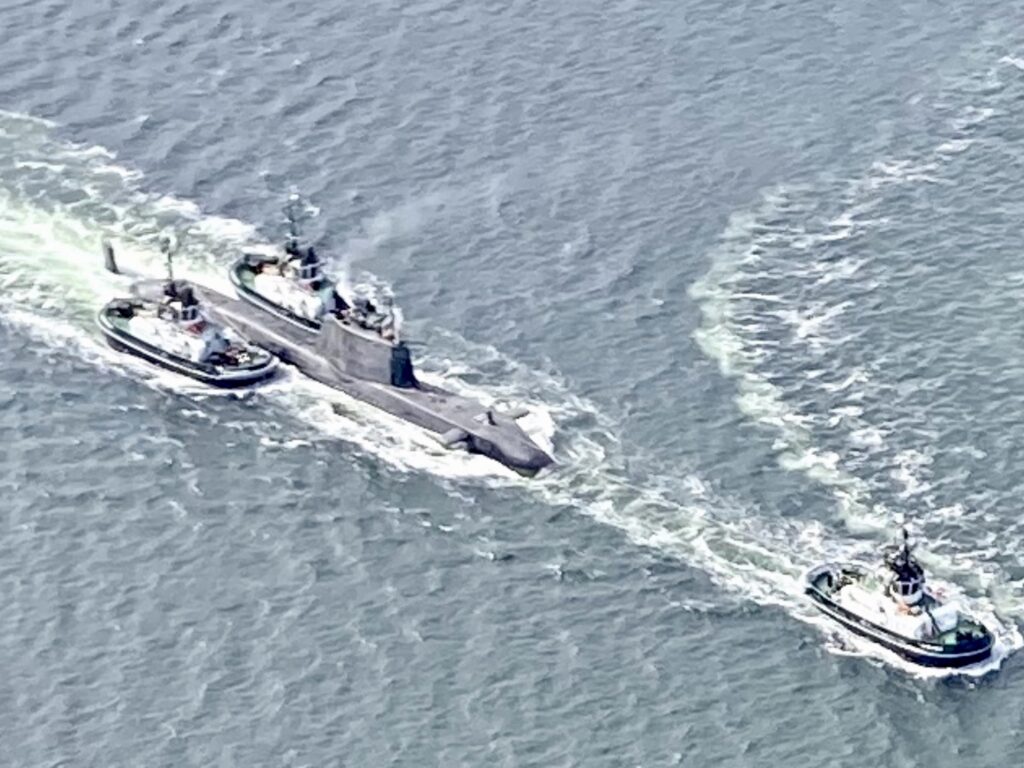
I’ve just heard that the Cub’s annual is being signed off tomorrow. There was a problem with the auxiliary fuel tank in the wing not feeding properly. Rerouting the line slightly has removed the potential for airlock and it should be fine again.
The auxiliary tank almost doubles the range of the Cub. Good for long distance travelling…such as Normandy 2024 for the 80th anniversary of D-Day. Less than two years to go!
Big “shout out” to Bob of ACS Engineering, seen here shyly hiding behind the wing, who did most of the actual grunt work on the aircraft:
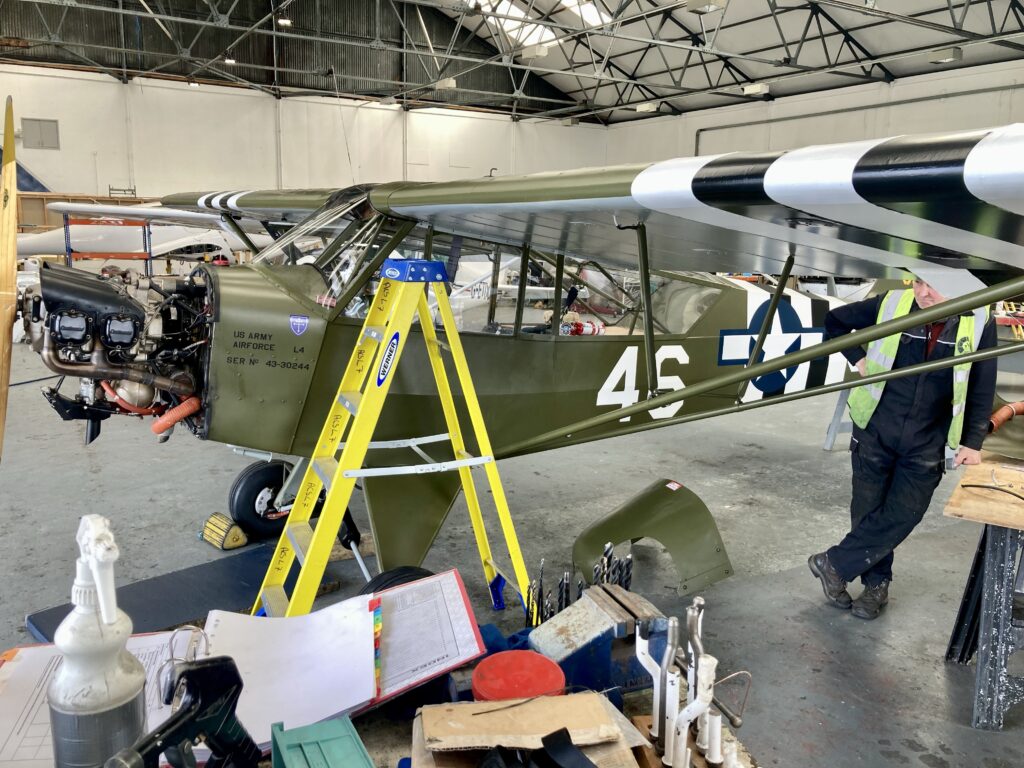
Good to go for another 50 hours / six months!

